Head Start Your Radiology Residency [Online] ↗️
- Radiology Thesis – More than 400 Research Topics (2022)!

Please login to bookmark
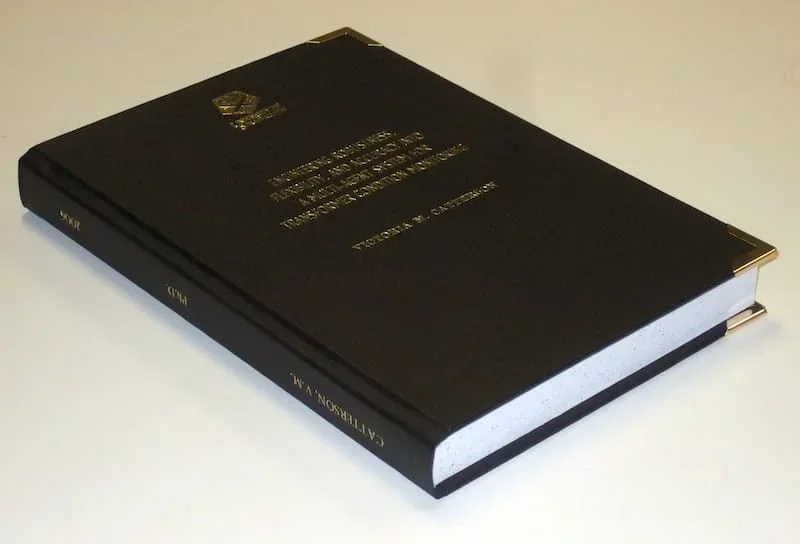
Introduction
A thesis or dissertation, as some people would like to call it, is an integral part of the Radiology curriculum, be it MD, DNB, or DMRD. We have tried to aggregate radiology thesis topics from various sources for reference.
Not everyone is interested in research, and writing a Radiology thesis can be daunting. But there is no escape from preparing, so it is better that you accept this bitter truth and start working on it instead of cribbing about it (like other things in life. #PhilosophyGyan!)
Start working on your thesis as early as possible and finish your thesis well before your exams, so you do not have that stress at the back of your mind. Also, your thesis may need multiple revisions, so be prepared and allocate time accordingly.
Tips for Choosing Radiology Thesis and Research Topics
Keep it simple silly (kiss).
Retrospective > Prospective
Retrospective studies are better than prospective ones, as you already have the data you need when choosing to do a retrospective study. Prospective studies are better quality, but as a resident, you may not have time (, energy and enthusiasm) to complete these.
Choose a simple topic that answers a single/few questions
Original research is challenging, especially if you do not have prior experience. I would suggest you choose a topic that answers a single or few questions. Most topics that I have listed are along those lines. Alternatively, you can choose a broad topic such as “Role of MRI in evaluation of perianal fistulas.”
You can choose a novel topic if you are genuinely interested in research AND have a good mentor who will guide you. Once you have done that, make sure that you publish your study once you are done with it.
Get it done ASAP.
In most cases, it makes sense to stick to a thesis topic that will not take much time. That does not mean you should ignore your thesis and ‘Ctrl C + Ctrl V’ from a friend from another university. Thesis writing is your first step toward research methodology so do it as sincerely as possible. Do not procrastinate in preparing the thesis. As soon as you have been allotted a guide, start researching topics and writing a review of the literature.
At the same time, do not invest a lot of time in writing/collecting data for your thesis. You should not be busy finishing your thesis a few months before the exam. Some people could not appear for the exam because they could not submit their thesis in time. So DO NOT TAKE thesis lightly.
Do NOT Copy-Paste
Reiterating once again, do not simply choose someone else’s thesis topic. Find out what are kind of cases that your Hospital caters to. It is better to do a good thesis on a common topic than a crappy one on a rare one.
Books to help you write a Radiology Thesis
Event country/university has a different format for thesis; hence these book recommendations may not work for everyone.

- Amazon Kindle Edition
- Gupta, Piyush (Author)
- English (Publication Language)
- 206 Pages - 10/12/2020 (Publication Date) - Jaypee Brothers Medical Publishers (P) Ltd. (Publisher)
In A Hurry? Download a PDF list of Radiology Research Topics!
Sign up below to get this PDF directly to your email address.
100% Privacy Guaranteed. Your information will not be shared. Unsubscribe anytime with a single click.
List of Radiology Research /Thesis / Dissertation Topics
- State of the art of MRI in the diagnosis of hepatic focal lesions
- Multimodality imaging evaluation of sacroiliitis in newly diagnosed patients of spondyloarthropathy
- Multidetector computed tomography in oesophageal varices
- Role of positron emission tomography with computed tomography in the diagnosis of cancer Thyroid
- Evaluation of focal breast lesions using ultrasound elastography
- Role of MRI diffusion tensor imaging in the assessment of traumatic spinal cord injuries
- Sonographic imaging in male infertility
- Comparison of color Doppler and digital subtraction angiography in occlusive arterial disease in patients with lower limb ischemia
- The role of CT urography in Haematuria
- Role of functional magnetic resonance imaging in making brain tumor surgery safer
- Prediction of pre-eclampsia and fetal growth restriction by uterine artery Doppler
- Role of grayscale and color Doppler ultrasonography in the evaluation of neonatal cholestasis
- Validity of MRI in the diagnosis of congenital anorectal anomalies
- Role of sonography in assessment of clubfoot
- Role of diffusion MRI in preoperative evaluation of brain neoplasms
- Imaging of upper airways for pre-anaesthetic evaluation purposes and for laryngeal afflictions.
- A study of multivessel (arterial and venous) Doppler velocimetry in intrauterine growth restriction
- Multiparametric 3tesla MRI of suspected prostatic malignancy.
- Role of Sonography in Characterization of Thyroid Nodules for differentiating benign from
- Role of advances magnetic resonance imaging sequences in multiple sclerosis
- Role of multidetector computed tomography in evaluation of jaw lesions
- Role of Ultrasound and MR Imaging in the Evaluation of Musculotendinous Pathologies of Shoulder Joint
- Role of perfusion computed tomography in the evaluation of cerebral blood flow, blood volume and vascular permeability of cerebral neoplasms
- MRI flow quantification in the assessment of the commonest csf flow abnormalities
- Role of diffusion-weighted MRI in evaluation of prostate lesions and its histopathological correlation
- CT enterography in evaluation of small bowel disorders
- Comparison of perfusion magnetic resonance imaging (PMRI), magnetic resonance spectroscopy (MRS) in and positron emission tomography-computed tomography (PET/CT) in post radiotherapy treated gliomas to detect recurrence
- Role of multidetector computed tomography in evaluation of paediatric retroperitoneal masses
- Role of Multidetector computed tomography in neck lesions
- Estimation of standard liver volume in Indian population
- Role of MRI in evaluation of spinal trauma
- Role of modified sonohysterography in female factor infertility: a pilot study.
- The role of pet-CT in the evaluation of hepatic tumors
- Role of 3D magnetic resonance imaging tractography in assessment of white matter tracts compromise in supratentorial tumors
- Role of dual phase multidetector computed tomography in gallbladder lesions
- Role of multidetector computed tomography in assessing anatomical variants of nasal cavity and paranasal sinuses in patients of chronic rhinosinusitis.
- magnetic resonance spectroscopy in multiple sclerosis
- Evaluation of thyroid nodules by ultrasound elastography using acoustic radiation force impulse (ARFI) imaging
- Role of Magnetic Resonance Imaging in Intractable Epilepsy
- Evaluation of suspected and known coronary artery disease by 128 slice multidetector CT.
- Role of regional diffusion tensor imaging in the evaluation of intracranial gliomas and its histopathological correlation
- Role of chest sonography in diagnosing pneumothorax
- Role of CT virtual cystoscopy in diagnosis of urinary bladder neoplasia
- Role of MRI in assessment of valvular heart diseases
- High resolution computed tomography of temporal bone in unsafe chronic suppurative otitis media
- Multidetector CT urography in the evaluation of hematuria
- Contrast-induced nephropathy in diagnostic imaging investigations with intravenous iodinated contrast media
- Comparison of dynamic susceptibility contrast-enhanced perfusion magnetic resonance imaging and single photon emission computed tomography in patients with little’s disease
- Role of Multidetector Computed Tomography in Bowel Lesions.
- Role of diagnostic imaging modalities in evaluation of post liver transplantation recipient complications.
- Role of multislice CT scan and barium swallow in the estimation of oesophageal tumour length
- Malignant Lesions-A Prospective Study.
- Value of ultrasonography in assessment of acute abdominal diseases in pediatric age group
- Role of three dimensional multidetector CT hysterosalpingography in female factor infertility
- Comparative evaluation of multi-detector computed tomography (MDCT) virtual tracheo-bronchoscopy and fiberoptic tracheo-bronchoscopy in airway diseases
- Role of Multidetector CT in the evaluation of small bowel obstruction
- Sonographic evaluation in adhesive capsulitis of shoulder
- Utility of MR Urography Versus Conventional Techniques in Obstructive Uropathy
- MRI of the postoperative knee
- Role of 64 slice-multi detector computed tomography in diagnosis of bowel and mesenteric injury in blunt abdominal trauma.
- Sonoelastography and triphasic computed tomography in the evaluation of focal liver lesions
- Evaluation of Role of Transperineal Ultrasound and Magnetic Resonance Imaging in Urinary Stress incontinence in Women
- Multidetector computed tomographic features of abdominal hernias
- Evaluation of lesions of major salivary glands using ultrasound elastography
- Transvaginal ultrasound and magnetic resonance imaging in female urinary incontinence
- MDCT colonography and double-contrast barium enema in evaluation of colonic lesions
- Role of MRI in diagnosis and staging of urinary bladder carcinoma
- Spectrum of imaging findings in children with febrile neutropenia.
- Spectrum of radiographic appearances in children with chest tuberculosis.
- Role of computerized tomography in evaluation of mediastinal masses in pediatric
- Diagnosing renal artery stenosis: Comparison of multimodality imaging in diabetic patients
- Role of multidetector CT virtual hysteroscopy in the detection of the uterine & tubal causes of female infertility
- Role of multislice computed tomography in evaluation of crohn’s disease
- CT quantification of parenchymal and airway parameters on 64 slice MDCT in patients of chronic obstructive pulmonary disease
- Comparative evaluation of MDCT and 3t MRI in radiographically detected jaw lesions.
- Evaluation of diagnostic accuracy of ultrasonography, colour Doppler sonography and low dose computed tomography in acute appendicitis
- Ultrasonography , magnetic resonance cholangio-pancreatography (MRCP) in assessment of pediatric biliary lesions
- Multidetector computed tomography in hepatobiliary lesions.
- Evaluation of peripheral nerve lesions with high resolution ultrasonography and colour Doppler
- Multidetector computed tomography in pancreatic lesions
- Multidetector Computed Tomography in Paediatric abdominal masses.
- Evaluation of focal liver lesions by colour Doppler and MDCT perfusion imaging
- Sonographic evaluation of clubfoot correction during Ponseti treatment
- Role of multidetector CT in characterization of renal masses
- Study to assess the role of Doppler ultrasound in evaluation of arteriovenous (av) hemodialysis fistula and the complications of hemodialysis vasular access
- Comparative study of multiphasic contrast-enhanced CT and contrast-enhanced MRI in the evaluation of hepatic mass lesions
- Sonographic spectrum of rheumatoid arthritis
- Diagnosis & staging of liver fibrosis by ultrasound elastography in patients with chronic liver diseases
- Role of multidetector computed tomography in assessment of jaw lesions.
- Role of high-resolution ultrasonography in the differentiation of benign and malignant thyroid lesions
- Radiological evaluation of aortic aneurysms in patients selected for endovascular repair
- Role of conventional MRI, and diffusion tensor imaging tractography in evaluation of congenital brain malformations
- To evaluate the status of coronary arteries in patients with non-valvular atrial fibrillation using 256 multirow detector CT scan
- A comparative study of ultrasonography and CT – arthrography in diagnosis of chronic ligamentous and meniscal injuries of knee
- Multi detector computed tomography evaluation in chronic obstructive pulmonary disease and correlation with severity of disease
- Diffusion weighted and dynamic contrast enhanced magnetic resonance imaging in chemoradiotherapeutic response evaluation in cervical cancer.
- High resolution sonography in the evaluation of non-traumatic painful wrist
- The role of trans-vaginal ultrasound versus magnetic resonance imaging in diagnosis & evaluation of cancer cervix
- Role of multidetector row computed tomography in assessment of maxillofacial trauma
- Imaging of vascular complication after liver transplantation.
- Role of magnetic resonance perfusion weighted imaging & spectroscopy for grading of glioma by correlating perfusion parameter of the lesion with the final histopathological grade
- Magnetic resonance evaluation of abdominal tuberculosis.
- Diagnostic usefulness of low dose spiral HRCT in diffuse lung diseases
- Role of dynamic contrast enhanced and diffusion weighted magnetic resonance imaging in evaluation of endometrial lesions
- Contrast enhanced digital mammography anddigital breast tomosynthesis in early diagnosis of breast lesion
- Evaluation of Portal Hypertension with Colour Doppler flow imaging and magnetic resonance imaging
- Evaluation of musculoskeletal lesions by magnetic resonance imaging
- Role of diffusion magnetic resonance imaging in assessment of neoplastic and inflammatory brain lesions
- Radiological spectrum of chest diseases in HIV infected children High resolution ultrasonography in neck masses in children
- with surgical findings
- Sonographic evaluation of peripheral nerves in type 2 diabetes mellitus.
- Role of perfusion computed tomography in the evaluation of neck masses and correlation
- Role of ultrasonography in the diagnosis of knee joint lesions
- Role of ultrasonography in evaluation of various causes of pelvic pain in first trimester of pregnancy.
- Role of Magnetic Resonance Angiography in the Evaluation of Diseases of Aorta and its Branches
- MDCT fistulography in evaluation of fistula in Ano
- Role of multislice CT in diagnosis of small intestine tumors
- Role of high resolution CT in differentiation between benign and malignant pulmonary nodules in children
- A study of multidetector computed tomography urography in urinary tract abnormalities
- Role of high resolution sonography in assessment of ulnar nerve in patients with leprosy.
- Pre-operative radiological evaluation of locally aggressive and malignant musculoskeletal tumours by computed tomography and magnetic resonance imaging.
- The role of ultrasound & MRI in acute pelvic inflammatory disease
- Ultrasonography compared to computed tomographic arthrography in the evaluation of shoulder pain
- Role of Multidetector Computed Tomography in patients with blunt abdominal trauma.
- The Role of Extended field-of-view Sonography and compound imaging in Evaluation of Breast Lesions
- Evaluation of focal pancreatic lesions by Multidetector CT and perfusion CT
- Evaluation of breast masses on sono-mammography and colour Doppler imaging
- Role of CT virtual laryngoscopy in evaluation of laryngeal masses
- Triple phase multi detector computed tomography in hepatic masses
- Role of transvaginal ultrasound in diagnosis and treatment of female infertility
- Role of ultrasound and color Doppler imaging in assessment of acute abdomen due to female genetal causes
- High resolution ultrasonography and color Doppler ultrasonography in scrotal lesion
- Evaluation of diagnostic accuracy of ultrasonography with colour Doppler vs low dose computed tomography in salivary gland disease
- Role of multidetector CT in diagnosis of salivary gland lesions
- Comparison of diagnostic efficacy of ultrasonography and magnetic resonance cholangiopancreatography in obstructive jaundice: A prospective study
- Evaluation of varicose veins-comparative assessment of low dose CT venogram with sonography: pilot study
- Role of mammotome in breast lesions
- The role of interventional imaging procedures in the treatment of selected gynecological disorders
- Role of transcranial ultrasound in diagnosis of neonatal brain insults
- Role of multidetector CT virtual laryngoscopy in evaluation of laryngeal mass lesions
- Evaluation of adnexal masses on sonomorphology and color Doppler imaginig
- Role of radiological imaging in diagnosis of endometrial carcinoma
- Comprehensive imaging of renal masses by magnetic resonance imaging
- The role of 3D & 4D ultrasonography in abnormalities of fetal abdomen
- Diffusion weighted magnetic resonance imaging in diagnosis and characterization of brain tumors in correlation with conventional MRI
- Role of diffusion weighted MRI imaging in evaluation of cancer prostate
- Role of multidetector CT in diagnosis of urinary bladder cancer
- Role of multidetector computed tomography in the evaluation of paediatric retroperitoneal masses.
- Comparative evaluation of gastric lesions by double contrast barium upper G.I. and multi detector computed tomography
- Evaluation of hepatic fibrosis in chronic liver disease using ultrasound elastography
- Role of MRI in assessment of hydrocephalus in pediatric patients
- The role of sonoelastography in characterization of breast lesions
- The influence of volumetric tumor doubling time on survival of patients with intracranial tumours
- Role of perfusion computed tomography in characterization of colonic lesions
- Role of proton MRI spectroscopy in the evaluation of temporal lobe epilepsy
- Role of Doppler ultrasound and multidetector CT angiography in evaluation of peripheral arterial diseases.
- Role of multidetector computed tomography in paranasal sinus pathologies
- Role of virtual endoscopy using MDCT in detection & evaluation of gastric pathologies
- High resolution 3 Tesla MRI in the evaluation of ankle and hindfoot pain.
- Transperineal ultrasonography in infants with anorectal malformation
- CT portography using MDCT versus color Doppler in detection of varices in cirrhotic patients
- Role of CT urography in the evaluation of a dilated ureter
- Characterization of pulmonary nodules by dynamic contrast-enhanced multidetector CT
- Comprehensive imaging of acute ischemic stroke on multidetector CT
- The role of fetal MRI in the diagnosis of intrauterine neurological congenital anomalies
- Role of Multidetector computed tomography in pediatric chest masses
- Multimodality imaging in the evaluation of palpable & non-palpable breast lesion.
- Sonographic Assessment Of Fetal Nasal Bone Length At 11-28 Gestational Weeks And Its Correlation With Fetal Outcome.
- Role Of Sonoelastography And Contrast-Enhanced Computed Tomography In Evaluation Of Lymph Node Metastasis In Head And Neck Cancers
- Role Of Renal Doppler And Shear Wave Elastography In Diabetic Nephropathy
- Evaluation Of Relationship Between Various Grades Of Fatty Liver And Shear Wave Elastography Values
- Evaluation and characterization of pelvic masses of gynecological origin by USG, color Doppler and MRI in females of reproductive age group
- Radiological evaluation of small bowel diseases using computed tomographic enterography
- Role of coronary CT angiography in patients of coronary artery disease
- Role of multimodality imaging in the evaluation of pediatric neck masses
- Role of CT in the evaluation of craniocerebral trauma
- Role of magnetic resonance imaging (MRI) in the evaluation of spinal dysraphism
- Comparative evaluation of triple phase CT and dynamic contrast-enhanced MRI in patients with liver cirrhosis
- Evaluation of the relationship between carotid intima-media thickness and coronary artery disease in patients evaluated by coronary angiography for suspected CAD
- Assessment of hepatic fat content in fatty liver disease by unenhanced computed tomography
- Correlation of vertebral marrow fat on spectroscopy and diffusion-weighted MRI imaging with bone mineral density in postmenopausal women.
- Comparative evaluation of CT coronary angiography with conventional catheter coronary angiography
- Ultrasound evaluation of kidney length & descending colon diameter in normal and intrauterine growth-restricted fetuses
- A prospective study of hepatic vein waveform and splenoportal index in liver cirrhosis: correlation with child Pugh’s classification and presence of esophageal varices.
- CT angiography to evaluate coronary artery by-pass graft patency in symptomatic patient’s functional assessment of myocardium by cardiac MRI in patients with myocardial infarction
- MRI evaluation of HIV positive patients with central nervous system manifestations
- MDCT evaluation of mediastinal and hilar masses
- Evaluation of rotator cuff & labro-ligamentous complex lesions by MRI & MRI arthrography of shoulder joint
- Role of imaging in the evaluation of soft tissue vascular malformation
- Role of MRI and ultrasonography in the evaluation of multifidus muscle pathology in chronic low back pain patients
- Role of ultrasound elastography in the differential diagnosis of breast lesions
- Role of magnetic resonance cholangiopancreatography in evaluating dilated common bile duct in patients with symptomatic gallstone disease.
- Comparative study of CT urography & hybrid CT urography in patients with haematuria.
- Role of MRI in the evaluation of anorectal malformations
- Comparison of ultrasound-Doppler and magnetic resonance imaging findings in rheumatoid arthritis of hand and wrist
- Role of Doppler sonography in the evaluation of renal artery stenosis in hypertensive patients undergoing coronary angiography for coronary artery disease.
- Comparison of radiography, computed tomography and magnetic resonance imaging in the detection of sacroiliitis in ankylosing spondylitis.
- Mr evaluation of painful hip
- Role of MRI imaging in pretherapeutic assessment of oral and oropharyngeal malignancy
- Evaluation of diffuse lung diseases by high resolution computed tomography of the chest
- Mr evaluation of brain parenchyma in patients with craniosynostosis.
- Diagnostic and prognostic value of cardiovascular magnetic resonance imaging in dilated cardiomyopathy
- Role of multiparametric magnetic resonance imaging in the detection of early carcinoma prostate
- Role of magnetic resonance imaging in white matter diseases
- Role of sonoelastography in assessing the response to neoadjuvant chemotherapy in patients with locally advanced breast cancer.
- Role of ultrasonography in the evaluation of carotid and femoral intima-media thickness in predialysis patients with chronic kidney disease
- Role of H1 MRI spectroscopy in focal bone lesions of peripheral skeleton choline detection by MRI spectroscopy in breast cancer and its correlation with biomarkers and histological grade.
- Ultrasound and MRI evaluation of axillary lymph node status in breast cancer.
- Role of sonography and magnetic resonance imaging in evaluating chronic lateral epicondylitis.
- Comparative of sonography including Doppler and sonoelastography in cervical lymphadenopathy.
- Evaluation of Umbilical Coiling Index as Predictor of Pregnancy Outcome.
- Computerized Tomographic Evaluation of Azygoesophageal Recess in Adults.
- Lumbar Facet Arthropathy in Low Backache.
- “Urethral Injuries After Pelvic Trauma: Evaluation with Uretrography
- Role Of Ct In Diagnosis Of Inflammatory Renal Diseases
- Role Of Ct Virtual Laryngoscopy In Evaluation Of Laryngeal Masses
- “Ct Portography Using Mdct Versus Color Doppler In Detection Of Varices In
- Cirrhotic Patients”
- Role Of Multidetector Ct In Characterization Of Renal Masses
- Role Of Ct Virtual Cystoscopy In Diagnosis Of Urinary Bladder Neoplasia
- Role Of Multislice Ct In Diagnosis Of Small Intestine Tumors
- “Mri Flow Quantification In The Assessment Of The Commonest CSF Flow Abnormalities”
- “The Role Of Fetal Mri In Diagnosis Of Intrauterine Neurological CongenitalAnomalies”
- Role Of Transcranial Ultrasound In Diagnosis Of Neonatal Brain Insults
- “The Role Of Interventional Imaging Procedures In The Treatment Of Selected Gynecological Disorders”
- Role Of Radiological Imaging In Diagnosis Of Endometrial Carcinoma
- “Role Of High-Resolution Ct In Differentiation Between Benign And Malignant Pulmonary Nodules In Children”
- Role Of Ultrasonography In The Diagnosis Of Knee Joint Lesions
- “Role Of Diagnostic Imaging Modalities In Evaluation Of Post Liver Transplantation Recipient Complications”
- “Diffusion-Weighted Magnetic Resonance Imaging In Diagnosis And
- Characterization Of Brain Tumors In Correlation With Conventional Mri”
- The Role Of PET-CT In The Evaluation Of Hepatic Tumors
- “Role Of Computerized Tomography In Evaluation Of Mediastinal Masses In Pediatric patients”
- “Trans Vaginal Ultrasound And Magnetic Resonance Imaging In Female Urinary Incontinence”
- Role Of Multidetector Ct In Diagnosis Of Urinary Bladder Cancer
- “Role Of Transvaginal Ultrasound In Diagnosis And Treatment Of Female Infertility”
- Role Of Diffusion-Weighted Mri Imaging In Evaluation Of Cancer Prostate
- “Role Of Positron Emission Tomography With Computed Tomography In Diagnosis Of Cancer Thyroid”
- The Role Of CT Urography In Case Of Haematuria
- “Value Of Ultrasonography In Assessment Of Acute Abdominal Diseases In Pediatric Age Group”
- “Role Of Functional Magnetic Resonance Imaging In Making Brain Tumor Surgery Safer”
- The Role Of Sonoelastography In Characterization Of Breast Lesions
- “Ultrasonography, Magnetic Resonance Cholangiopancreatography (MRCP) In Assessment Of Pediatric Biliary Lesions”
- “Role Of Ultrasound And Color Doppler Imaging In Assessment Of Acute Abdomen Due To Female Genital Causes”
- “Role Of Multidetector Ct Virtual Laryngoscopy In Evaluation Of Laryngeal Mass Lesions”
- MRI Of The Postoperative Knee
- Role Of Mri In Assessment Of Valvular Heart Diseases
- The Role Of 3D & 4D Ultrasonography In Abnormalities Of Fetal Abdomen
- State Of The Art Of Mri In Diagnosis Of Hepatic Focal Lesions
- Role Of Multidetector Ct In Diagnosis Of Salivary Gland Lesions
- “Role Of Virtual Endoscopy Using Mdct In Detection & Evaluation Of Gastric Pathologies”
- The Role Of Ultrasound & Mri In Acute Pelvic Inflammatory Disease
- “Diagnosis & Staging Of Liver Fibrosis By Ultraso Und Elastography In
- Patients With Chronic Liver Diseases”
- Role Of Mri In Evaluation Of Spinal Trauma
- Validity Of Mri In Diagnosis Of Congenital Anorectal Anomalies
- Imaging Of Vascular Complication After Liver Transplantation
- “Contrast-Enhanced Digital Mammography And Digital Breast Tomosynthesis In Early Diagnosis Of Breast Lesion”
- Role Of Mammotome In Breast Lesions
- “Role Of MRI Diffusion Tensor Imaging (DTI) In Assessment Of Traumatic Spinal Cord Injuries”
- “Prediction Of Pre-eclampsia And Fetal Growth Restriction By Uterine Artery Doppler”
- “Role Of Multidetector Row Computed Tomography In Assessment Of Maxillofacial Trauma”
- “Role Of Diffusion Magnetic Resonance Imaging In Assessment Of Neoplastic And Inflammatory Brain Lesions”
- Role Of Diffusion Mri In Preoperative Evaluation Of Brain Neoplasms
- “Role Of Multidetector Ct Virtual Hysteroscopy In The Detection Of The
- Uterine & Tubal Causes Of Female Infertility”
- Role Of Advances Magnetic Resonance Imaging Sequences In Multiple Sclerosis Magnetic Resonance Spectroscopy In Multiple Sclerosis
- “Role Of Conventional Mri, And Diffusion Tensor Imaging Tractography In Evaluation Of Congenital Brain Malformations”
- Role Of MRI In Evaluation Of Spinal Trauma
- Diagnostic Role Of Diffusion-weighted MR Imaging In Neck Masses
- “The Role Of Transvaginal Ultrasound Versus Magnetic Resonance Imaging In Diagnosis & Evaluation Of Cancer Cervix”
- “Role Of 3d Magnetic Resonance Imaging Tractography In Assessment Of White Matter Tracts Compromise In Supra Tentorial Tumors”
- Role Of Proton MR Spectroscopy In The Evaluation Of Temporal Lobe Epilepsy
- Role Of Multislice Computed Tomography In Evaluation Of Crohn’s Disease
- Role Of MRI In Assessment Of Hydrocephalus In Pediatric Patients
- The Role Of MRI In Diagnosis And Staging Of Urinary Bladder Carcinoma
- USG and MRI correlation of congenital CNS anomalies
- HRCT in interstitial lung disease
- X-Ray, CT and MRI correlation of bone tumors
- “Study on the diagnostic and prognostic utility of X-Rays for cases of pulmonary tuberculosis under RNTCP”
- “Role of magnetic resonance imaging in the characterization of female adnexal pathology”
- “CT angiography of carotid atherosclerosis and NECT brain in cerebral ischemia, a correlative analysis”
- Role of CT scan in the evaluation of paranasal sinus pathology
- USG and MRI correlation on shoulder joint pathology
- “Radiological evaluation of a patient presenting with extrapulmonary tuberculosis”
- CT and MRI correlation in focal liver lesions”
- Comparison of MDCT virtual cystoscopy with conventional cystoscopy in bladder tumors”
- “Bleeding vessels in life-threatening hemoptysis: Comparison of 64 detector row CT angiography with conventional angiography prior to endovascular management”
- “Role of transarterial chemoembolization in unresectable hepatocellular carcinoma”
- “Comparison of color flow duplex study with digital subtraction angiography in the evaluation of peripheral vascular disease”
- “A Study to assess the efficacy of magnetization transfer ratio in differentiating tuberculoma from neurocysticercosis”
- “MR evaluation of uterine mass lesions in correlation with transabdominal, transvaginal ultrasound using HPE as a gold standard”
- “The Role of power Doppler imaging with trans rectal ultrasonogram guided prostate biopsy in the detection of prostate cancer”
- “Lower limb arteries assessed with doppler angiography – A prospective comparative study with multidetector CT angiography”
- “Comparison of sildenafil with papaverine in penile doppler by assessing hemodynamic changes”
- “Evaluation of efficacy of sonosalphingogram for assessing tubal patency in infertile patients with hysterosalpingogram as the gold standard”
- Role of CT enteroclysis in the evaluation of small bowel diseases
- “MRI colonography versus conventional colonoscopy in the detection of colonic polyposis”
- “Magnetic Resonance Imaging of anteroposterior diameter of the midbrain – differentiation of progressive supranuclear palsy from Parkinson disease”
- “MRI Evaluation of anterior cruciate ligament tears with arthroscopic correlation”
- “The Clinicoradiological profile of cerebral venous sinus thrombosis with prognostic evaluation using MR sequences”
- “Role of MRI in the evaluation of pelvic floor integrity in stress incontinent patients” “Doppler ultrasound evaluation of hepatic venous waveform in portal hypertension before and after propranolol”
- “Role of transrectal sonography with colour doppler and MRI in evaluation of prostatic lesions with TRUS guided biopsy correlation”
- “Ultrasonographic evaluation of painful shoulders and correlation of rotator cuff pathologies and clinical examination”
- “Colour Doppler Evaluation of Common Adult Hepatic tumors More Than 2 Cm with HPE and CECT Correlation”
- “Clinical Relevance of MR Urethrography in Obliterative Posterior Urethral Stricture”
- “Prediction of Adverse Perinatal Outcome in Growth Restricted Fetuses with Antenatal Doppler Study”
- Radiological evaluation of spinal dysraphism using CT and MRI
- “Evaluation of temporal bone in cholesteatoma patients by high resolution computed tomography”
- “Radiological evaluation of primary brain tumours using computed tomography and magnetic resonance imaging”
- “Three dimensional colour doppler sonographic assessment of changes in volume and vascularity of fibroids – before and after uterine artery embolization”
- “In phase opposed phase imaging of bone marrow differentiating neoplastic lesions”
- “Role of dynamic MRI in replacing the isotope renogram in the functional evaluation of PUJ obstruction”
- Characterization of adrenal masses with contrast-enhanced CT – washout study
- A study on accuracy of magnetic resonance cholangiopancreatography
- “Evaluation of median nerve in carpal tunnel syndrome by high-frequency ultrasound & color doppler in comparison with nerve conduction studies”
- “Correlation of Agatston score in patients with obstructive and nonobstructive coronary artery disease following STEMI”
- “Doppler ultrasound assessment of tumor vascularity in locally advanced breast cancer at diagnosis and following primary systemic chemotherapy.”
- “Validation of two-dimensional perineal ultrasound and dynamic magnetic resonance imaging in pelvic floor dysfunction.”
- “Role of MR urethrography compared to conventional urethrography in the surgical management of obliterative urethral stricture.”
Search Diagnostic Imaging Research Topics
You can also search research-related resources on our custom search engine .
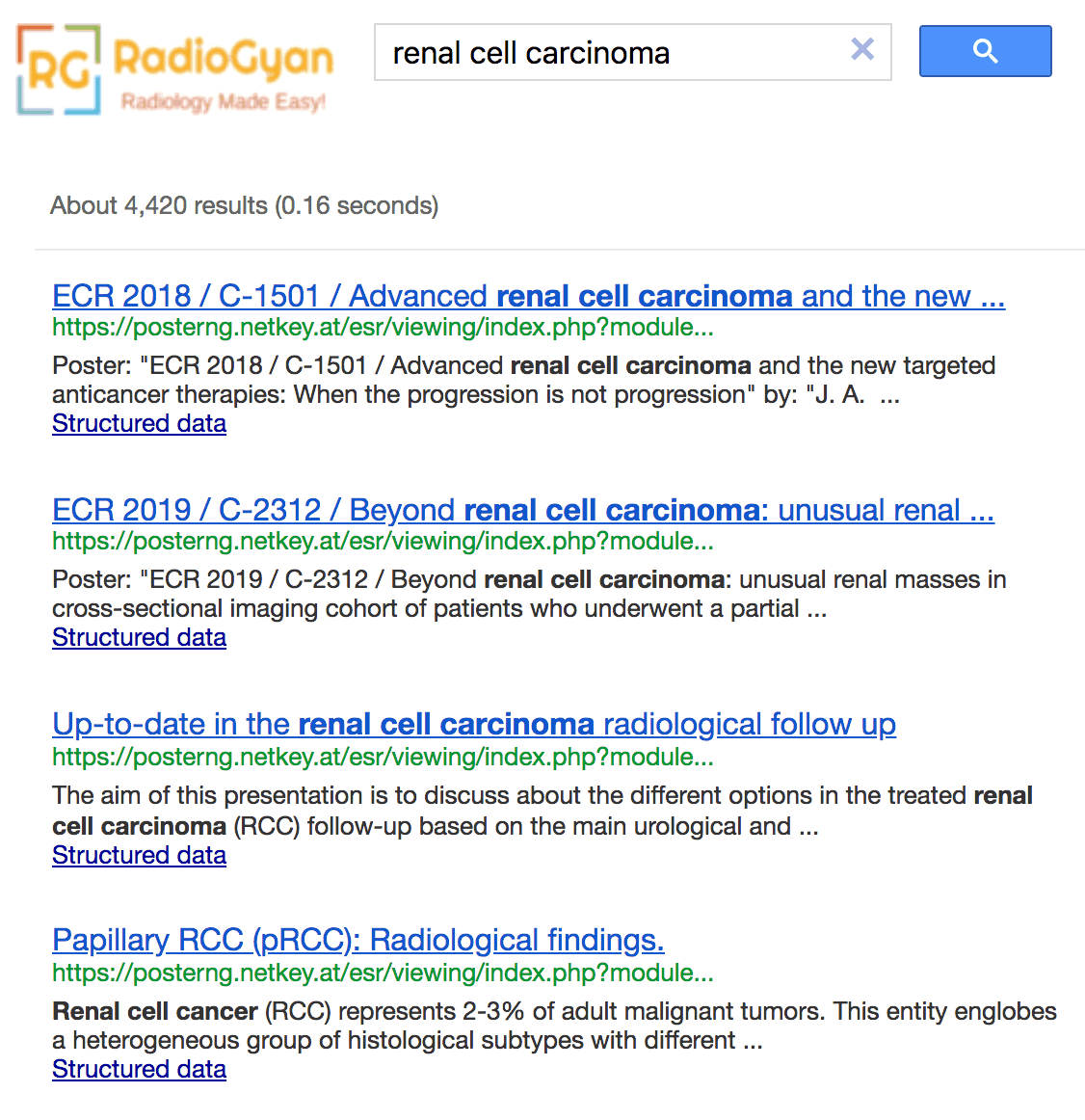
Free Resources for Preparing Radiology Thesis
- Radiology thesis topics- Benha University – Free to download thesis
- Radiology thesis topics – Faculty of Medical Science Delhi
- Radiology thesis topics – IPGMER
- Fetal Radiology thesis Protocols
- Radiology thesis and dissertation topics
- Radiographics
Proofreading Your Thesis:
Make sure you use Grammarly to correct your spelling , grammar , and plagiarism for your thesis. Grammarly has affordable paid subscriptions, windows/macOS apps, and FREE browser extensions. It is an excellent tool to avoid inadvertent spelling mistakes in your research projects. It has an extensive built-in vocabulary, but you should make an account and add your own medical glossary to it.

Guidelines for Writing a Radiology Thesis:
These are general guidelines and not about radiology specifically. You can share these with colleagues from other departments as well. Special thanks to Dr. Sanjay Yadav sir for these. This section is best seen on a desktop. Here are a couple of handy presentations to start writing a thesis:
Read the general guidelines for writing a thesis (the page will take some time to load- more than 70 pages!
A format for thesis protocol with a sample patient information sheet, sample patient consent form, sample application letter for thesis, and sample certificate.
Resources and References:
- Guidelines for thesis writing.
- Format for thesis protocol
- Thesis protocol writing guidelines DNB
- Informed consent form for Research studies from AIIMS
- Radiology Informed consent forms in local Indian languages.
- Sample Informed Consent form for Research in Hindi
- Guide to write a thesis by Dr. P R Sharma
- Guidelines for thesis writing by Dr. Pulin Gupta.
- Preparing MD/DNB thesis by A Indrayan
- Another good thesis reference protocol
Hopefully, this post will make the tedious task of writing a Radiology thesis a little bit easier for you. Best of luck with writing your thesis and your residency too!
More guides for residents :
- Guide for the MD/DMRD/DNB radiology exam!
- Guide for First-Year Radiology Residents
- FRCR Exam: THE Most Comprehensive Guide (2022)!
- Radiology Practical Exams Questions compilation for MD/DNB/DMRD !
- Radiology Exam Resources (Oral Recalls, Instruments, etc )!
- Tips and Tricks for DNB/MD Radiology Practical Exam
- FRCR 2B exam- Tips and Tricks !
- FRCR exam preparation – An alternative take!
- Why did I take up Radiology?
- Radiology Conferences – A comprehensive guide!
ECR (European Congress Of Radiology)
European diploma in radiology (edir) – the complete guide.
- Radiology NEET PG guide – How to select THE best college for post-graduation in Radiology (includes personal insights)!
- Interventional Radiology – All Your Questions Answered!
- What It Means To Be A Radiologist: A Guide For Medical Students!
- Radiology Mentors for Medical Students (Post NEET-PG)
- MD vs DNB Radiology: Which Path is Right for Your Career?
- DNB Radiology OSCE – Tips and Tricks
More radiology resources here: Radiology resources This page will be updated regularly. Kindly leave your feedback in the comments or send us a message here . Also, you can comment below regarding your department’s thesis topics.
Note: All topics have been compiled from available online resources. If anyone has an issue with any radiology thesis topics displayed here, you can message us here , and we can delete them. These are only sample guidelines. Thesis guidelines differ from institution to institution.
Image source: Thesis complete! (2018). Flickr. Retrieved 12 August 2018, from https://www.flickr.com/photos/cowlet/354911838 by Victoria Catterson
About The Author
Dr. amar udare, md, related posts ↓.

7 thoughts on “Radiology Thesis – More than 400 Research Topics (2022)!”
Amazing & The most helpful site for Radiology residents…
Thank you for your kind comments 🙂
Dr. I saw your Tips is very amazing and referable. But Dr. Can you help me with the thesis of Evaluation of Diagnostic accuracy of X-ray radiograph in knee joint lesion.
Wow! These are excellent stuff. You are indeed a teacher. God bless
Glad you liked these!
happy to see this
Glad I could help :).
Leave a Comment Cancel Reply
Your email address will not be published. Required fields are marked *
Get Radiology Updates to Your Inbox!
This site is for use by medical professionals. To continue, you must accept our use of cookies and the site's Terms of Use. Learn more Accept!
Wish to be a BETTER Radiologist? Join 14000 Radiology Colleagues !
Enter your email address below to access HIGH YIELD radiology content, updates, and resources.
No spam, only VALUE! Unsubscribe anytime with a single click.
Radiology Research Paper Topics

Radiology research paper topics encompass a wide range of fascinating areas within the field of medical imaging. This page aims to provide students studying health sciences with a comprehensive collection of radiology research paper topics to inspire and guide their research endeavors. By delving into various categories and exploring ten thought-provoking topics within each, students can gain insights into the diverse research possibilities in radiology. From advancements in imaging technology to the evaluation of diagnostic accuracy and the impact of radiological interventions, these topics offer a glimpse into the exciting world of radiology research. Additionally, expert advice is provided to help students choose the most suitable research topics and navigate the process of writing a research paper in radiology. By leveraging iResearchNet’s writing services, students can further enhance their research papers with professional assistance, ensuring the highest quality and adherence to academic standards. Explore the realm of radiology research paper topics and unleash your potential to contribute to the advancement of medical imaging and patient care.
100 Radiology Research Paper Topics
Radiology encompasses a broad spectrum of imaging techniques used to diagnose diseases, monitor treatment progress, and guide interventions. This comprehensive list of radiology research paper topics serves as a valuable resource for students in the field of health sciences who are seeking inspiration and guidance for their research endeavors. The following ten categories highlight different areas within radiology, each containing ten thought-provoking topics. Exploring these topics will provide students with a deeper understanding of the diverse research possibilities and current trends within the field of radiology.
Academic Writing, Editing, Proofreading, And Problem Solving Services
Get 10% off with 24start discount code.
Diagnostic Imaging Techniques
- Comparative analysis of imaging modalities: CT, MRI, and PET-CT.
- The role of artificial intelligence in radiological image interpretation.
- Advancements in digital mammography for breast cancer screening.
- Emerging techniques in nuclear medicine imaging.
- Image-guided biopsy: Enhancing accuracy and safety.
- Application of radiomics in predicting treatment response.
- Dual-energy CT: Expanding diagnostic capabilities.
- Radiological evaluation of traumatic brain injuries.
- Imaging techniques for evaluating cardiovascular diseases.
- Radiographic evaluation of pulmonary nodules: Challenges and advancements.
Interventional Radiology
- Minimally invasive treatments for liver tumors: Embolization techniques.
- Radiofrequency ablation in the management of renal cell carcinoma.
- Role of interventional radiology in the treatment of peripheral artery disease.
- Transarterial chemoembolization in hepatocellular carcinoma.
- Evaluation of uterine artery embolization for the treatment of fibroids.
- Percutaneous vertebroplasty and kyphoplasty: Efficacy and complications.
- Endovascular repair of abdominal aortic aneurysms: Long-term outcomes.
- Interventional radiology in the management of deep vein thrombosis.
- Transcatheter aortic valve replacement: Imaging considerations.
- Emerging techniques in interventional oncology.
Radiation Safety and Dose Optimization
- Strategies for reducing radiation dose in pediatric imaging.
- Imaging modalities with low radiation exposure: Current advancements.
- Effective use of dose monitoring systems in radiology departments.
- The impact of artificial intelligence on radiation dose optimization.
- Optimization of radiation therapy treatment plans: Balancing efficacy and safety.
- Radioprotective measures for patients and healthcare professionals.
- The role of radiology in addressing radiation-induced risks.
- Evaluating the long-term effects of radiation exposure in diagnostic imaging.
- Radiation dose tracking and reporting: Implementing best practices.
- Patient education and communication regarding radiation risks.
Radiology in Oncology
- Imaging techniques for early detection and staging of lung cancer.
- Quantitative imaging biomarkers for predicting treatment response in solid tumors.
- Radiogenomics: Linking imaging features to genetic profiles in cancer.
- The role of imaging in assessing tumor angiogenesis.
- Radiological evaluation of lymphoma: Challenges and advancements.
- Imaging-guided interventions in the treatment of hepatocellular carcinoma.
- Assessment of tumor heterogeneity using functional imaging techniques.
- Radiomics and machine learning in predicting treatment outcomes in cancer.
- Multimodal imaging in the evaluation of brain tumors.
- Imaging surveillance after cancer treatment: Optimizing follow-up protocols.
Radiology in Musculoskeletal Disorders
- Imaging modalities in the evaluation of sports-related injuries.
- The role of imaging in diagnosing and monitoring rheumatoid arthritis.
- Assessment of bone health using dual-energy X-ray absorptiometry (DXA).
- Imaging techniques for evaluating osteoarthritis progression.
- Imaging-guided interventions in the management of musculoskeletal tumors.
- Role of imaging in diagnosing and managing spinal disorders.
- Evaluation of traumatic injuries using radiography, CT, and MRI.
- Imaging of joint prostheses: Complications and assessment techniques.
- Imaging features and classifications of bone fractures.
- Musculoskeletal ultrasound in the diagnosis of soft tissue injuries.
Neuroradiology
- Advanced neuroimaging techniques for early detection of neurodegenerative diseases.
- Imaging evaluation of acute stroke: Current guidelines and advancements.
- Role of functional MRI in mapping brain functions.
- Imaging of brain tumors: Classification and treatment planning.
- Diffusion tensor imaging in assessing white matter integrity.
- Neuroimaging in the evaluation of multiple sclerosis.
- Imaging techniques for the assessment of epilepsy.
- Radiological evaluation of neurovascular diseases.
- Imaging of cranial nerve disorders: Diagnosis and management.
- Radiological assessment of developmental brain abnormalities.
Pediatric Radiology
- Radiation dose reduction strategies in pediatric imaging.
- Imaging evaluation of congenital heart diseases in children.
- Role of imaging in the diagnosis and management of pediatric oncology.
- Imaging of pediatric gastrointestinal disorders.
- Evaluation of developmental hip dysplasia using ultrasound and radiography.
- Imaging features and management of pediatric musculoskeletal infections.
- Neuroimaging in the assessment of pediatric neurodevelopmental disorders.
- Radiological evaluation of pediatric respiratory conditions.
- Imaging techniques for the evaluation of pediatric abdominal emergencies.
- Imaging-guided interventions in pediatric patients.
Breast Imaging
- Advances in digital mammography for early breast cancer detection.
- The role of tomosynthesis in breast imaging.
- Imaging evaluation of breast implants: Complications and assessment.
- Radiogenomic analysis of breast cancer subtypes.
- Contrast-enhanced mammography: Diagnostic benefits and challenges.
- Emerging techniques in breast MRI for high-risk populations.
- Evaluation of breast density and its implications for cancer risk.
- Role of molecular breast imaging in dense breast tissue evaluation.
- Radiological evaluation of male breast disorders.
- The impact of artificial intelligence on breast cancer screening.
Cardiac Imaging
- Imaging evaluation of coronary artery disease: Current techniques and challenges.
- Role of cardiac CT angiography in the assessment of structural heart diseases.
- Imaging of cardiac tumors: Diagnosis and treatment considerations.
- Advanced imaging techniques for assessing myocardial viability.
- Evaluation of valvular heart diseases using echocardiography and MRI.
- Cardiac magnetic resonance imaging in the evaluation of cardiomyopathies.
- Role of nuclear cardiology in the assessment of cardiac function.
- Imaging evaluation of congenital heart diseases in adults.
- Radiological assessment of cardiac arrhythmias.
- Imaging-guided interventions in structural heart diseases.
Abdominal and Pelvic Imaging
- Evaluation of hepatobiliary diseases using imaging techniques.
- Imaging features and classification of renal masses.
- Radiological assessment of gastrointestinal bleeding.
- Imaging evaluation of pancreatic diseases: Challenges and advancements.
- Evaluation of pelvic floor disorders using MRI and ultrasound.
- Role of imaging in diagnosing and staging gynecological cancers.
- Imaging of abdominal and pelvic trauma: Current guidelines and techniques.
- Radiological evaluation of genitourinary disorders.
- Imaging features of abdominal and pelvic infections.
- Assessment of abdominal and pelvic vascular diseases using imaging techniques.
This comprehensive list of radiology research paper topics highlights the vast range of research possibilities within the field of medical imaging. Each category offers unique insights and avenues for exploration, enabling students to delve into various aspects of radiology. By choosing a topic of interest and relevance, students can contribute to the advancement of medical imaging and patient care. The provided topics serve as a starting point for students to engage in in-depth research and produce high-quality research papers.
Radiology: Exploring the Range of Research Paper Topics
Introduction: Radiology plays a crucial role in modern healthcare, providing valuable insights into the diagnosis, treatment, and monitoring of various medical conditions. As a dynamic and rapidly evolving field, radiology offers a wide range of research opportunities for students in the health sciences. This article aims to explore the diverse spectrum of research paper topics within radiology, shedding light on the current trends, innovations, and challenges in the field.
Radiology in Diagnostic Imaging : Diagnostic imaging is one of the core areas of radiology, encompassing various modalities such as X-ray, computed tomography (CT), magnetic resonance imaging (MRI), ultrasound, and nuclear medicine. Research topics in this domain may include advancements in imaging techniques, comparative analysis of modalities, radiomics, and the integration of artificial intelligence in image interpretation. Students can explore how these technological advancements enhance diagnostic accuracy, improve patient outcomes, and optimize radiation exposure.
Interventional Radiology : Interventional radiology focuses on minimally invasive procedures performed under image guidance. Research topics in this area can cover a wide range of interventions, such as angioplasty, embolization, radiofrequency ablation, and image-guided biopsies. Students can delve into the latest techniques, outcomes, and complications associated with interventional procedures, as well as explore the emerging role of interventional radiology in managing various conditions, including vascular diseases, cancer, and pain management.
Radiation Safety and Dose Optimization : Radiation safety is a critical aspect of radiology practice. Research in this field aims to minimize radiation exposure to patients and healthcare professionals while maintaining optimal diagnostic image quality. Topics may include strategies for reducing radiation dose in pediatric imaging, dose monitoring systems, the impact of artificial intelligence on radiation dose optimization, and radioprotective measures. Students can investigate how to strike a balance between effective imaging and patient safety, exploring advancements in dose reduction techniques and the implementation of best practices.
Radiology in Oncology : Radiology plays a vital role in the diagnosis, staging, and treatment response assessment in cancer patients. Research topics in this area can encompass the use of imaging techniques for early detection, tumor characterization, response prediction, and treatment planning. Students can explore the integration of radiomics, machine learning, and molecular imaging in oncology research, as well as advancements in functional imaging and image-guided interventions.
Radiology in Neuroimaging : Neuroimaging is a specialized field within radiology that focuses on imaging the brain and central nervous system. Research topics in neuroimaging can cover areas such as stroke imaging, neurodegenerative diseases, brain tumors, neurovascular disorders, and functional imaging for mapping brain functions. Students can explore the latest imaging techniques, image analysis tools, and their clinical applications in understanding and diagnosing various neurological conditions.
Radiology in Musculoskeletal Imaging : Musculoskeletal imaging involves the evaluation of bone, joint, and soft tissue disorders. Research topics in this area can encompass imaging techniques for sports-related injuries, arthritis, musculoskeletal tumors, spinal disorders, and trauma. Students can explore the role of advanced imaging modalities such as MRI and ultrasound in diagnosing and managing musculoskeletal conditions, as well as the use of imaging-guided interventions for treatment.
Pediatric Radiology : Pediatric radiology focuses on imaging children, who have unique anatomical and physiological considerations. Research topics in this field may include radiation dose reduction strategies in pediatric imaging, imaging evaluation of congenital anomalies, pediatric oncology imaging, and imaging assessment of developmental disorders. Students can explore how to tailor imaging protocols for children, minimize radiation exposure, and improve diagnostic accuracy in pediatric patients.
Breast Imaging : Breast imaging is essential for the early detection and diagnosis of breast cancer. Research topics in this area can cover advancements in mammography, tomosynthesis, breast MRI, and molecular imaging. Students can explore topics related to breast density, imaging-guided biopsies, breast cancer screening, and the impact of artificial intelligence in breast imaging. Additionally, they can investigate the use of imaging techniques for evaluating breast implants and assessing high-risk populations.
Cardiac Imaging : Cardiac imaging focuses on the evaluation of heart structure and function. Research topics in this field may include imaging techniques for coronary artery disease, valvular heart diseases, cardiomyopathies, and cardiac tumors. Students can explore the role of cardiac CT, MRI, nuclear cardiology, and echocardiography in diagnosing and managing various cardiac conditions. Additionally, they can investigate the use of imaging in guiding interventional procedures and assessing treatment outcomes.
Abdominal and Pelvic Imaging : Abdominal and pelvic imaging involves the evaluation of organs and structures within the abdominal and pelvic cavities. Research topics in this area can encompass imaging of the liver, kidneys, gastrointestinal tract, pancreas, genitourinary system, and pelvic floor. Students can explore topics related to imaging techniques, evaluation of specific diseases or conditions, and the role of imaging in guiding interventions. Additionally, they can investigate emerging modalities such as elastography and diffusion-weighted imaging in abdominal and pelvic imaging.
Radiology offers a vast array of research opportunities for students in the field of health sciences. The topics discussed in this article provide a glimpse into the breadth and depth of research possibilities within radiology. By exploring these research areas, students can contribute to advancements in diagnostic accuracy, treatment planning, and patient care. With the rapid evolution of imaging technologies and the integration of artificial intelligence, the future of radiology research holds immense potential for improving healthcare outcomes.
Choosing Radiology Research Paper Topics
Introduction: Selecting a research topic is a crucial step in the journey of writing a radiology research paper. It determines the focus of your study and influences the impact your research can have in the field. To help you make an informed choice, we have compiled expert advice on selecting radiology research paper topics. By following these tips, you can identify a relevant and engaging research topic that aligns with your interests and contributes to the advancement of radiology knowledge.
- Identify Your Interests : Start by reflecting on your own interests within the field of radiology. Consider which subspecialties or areas of radiology intrigue you the most. Are you interested in diagnostic imaging, interventional radiology, radiation safety, oncology imaging, or any other specific area? Identifying your interests will guide you in selecting a topic that excites you and keeps you motivated throughout the research process.
- Stay Updated on Current Trends : Keep yourself updated on the latest advancements, breakthroughs, and emerging trends in radiology. Read scientific journals, attend conferences, and engage in discussions with experts in the field. By staying informed, you can identify gaps in knowledge or areas that require further investigation, providing you with potential research topics that are timely and relevant.
- Consult with Faculty or Mentors : Seek guidance from your faculty members or mentors who are experienced in the field of radiology. They can provide valuable insights into potential research areas, ongoing projects, and research gaps. Discuss your research interests with them and ask for their suggestions and recommendations. Their expertise and guidance can help you narrow down your research topic and refine your research question.
- Conduct a Literature Review : Conducting a thorough literature review is an essential step in choosing a research topic. It allows you to familiarize yourself with the existing body of knowledge, identify research gaps, and build a strong foundation for your study. Analyze recent research papers, systematic reviews, and meta-analyses related to radiology to identify areas that need further investigation or where controversies exist.
- Brainstorm Research Questions : Once you have gained an understanding of the current state of research in radiology, brainstorm potential research questions. Consider the gaps or controversies you identified during your literature review. Develop research questions that address these gaps and contribute to the existing knowledge. Ensure that your research questions are clear, focused, and answerable within the scope of your study.
- Consider the Practicality and Feasibility : When selecting a research topic, consider the practicality and feasibility of conducting the study. Evaluate the availability of resources, access to data, research facilities, and ethical considerations. Assess the time frame and potential constraints that may impact your research. Choosing a topic that is feasible within your given resources and time frame will ensure a successful and manageable research experience.
- Collaborate with Peers : Consider collaborating with your peers or forming a research group to enhance your research experience. Collaborative research allows for a sharing of ideas, resources, and expertise, fostering a supportive environment. By working together, you can explore more complex research topics, conduct multicenter studies, and generate more impactful findings.
- Seek Multidisciplinary Perspectives : Radiology intersects with various other medical disciplines. Consider exploring interdisciplinary research topics that integrate radiology with fields such as oncology, cardiology, neurology, or orthopedics. By incorporating multidisciplinary perspectives, you can address complex healthcare challenges and contribute to a broader understanding of patient care.
- Choose a Topic with Clinical Relevance : Select a research topic that has direct clinical relevance. Focus on topics that can potentially influence patient outcomes, improve diagnostic accuracy, optimize treatment strategies, or enhance patient safety. By choosing a clinically relevant topic, you can contribute to the advancement of radiology practice and have a positive impact on patient care.
- Seek Ethical Considerations : Ensure that your research topic adheres to ethical considerations in radiology research. Patient privacy, confidentiality, and informed consent should be prioritized when conducting studies involving human subjects. Familiarize yourself with the ethical guidelines and regulations specific to radiology research and ensure that your study design and data collection methods are in line with these principles.
Choosing a radiology research paper topic requires careful consideration and alignment with your interests, expertise, and the current trends in the field. By following the expert advice provided in this section, you can select a research topic that is engaging, relevant, and contributes to the advancement of radiology knowledge. Remember to consult with mentors, conduct a thorough literature review, and consider practicality and feasibility. With a well-chosen research topic, you can embark on an exciting journey of exploration, innovation, and contribution to the field of radiology.
How to Write a Radiology Research Paper
Introduction: Writing a radiology research paper requires a systematic approach and attention to detail. It is essential to effectively communicate your research findings, methodology, and conclusions to contribute to the body of knowledge in the field. In this section, we will provide you with valuable tips on how to write a successful radiology research paper. By following these guidelines, you can ensure that your paper is well-structured, informative, and impactful.
- Define the Research Question : Start by clearly defining your research question or objective. It serves as the foundation of your research paper and guides your entire study. Ensure that your research question is specific, focused, and relevant to the field of radiology. Clearly articulate the purpose of your study and its potential implications.
- Conduct a Thorough Literature Review : Before diving into writing, conduct a comprehensive literature review to familiarize yourself with the existing body of knowledge in your research area. Identify key studies, seminal papers, and relevant research articles that will support your research. Analyze and synthesize the literature to identify gaps, controversies, or areas for further investigation.
- Develop a Well-Structured Outline : Create a clear and well-structured outline for your research paper. An outline serves as a roadmap and helps you organize your thoughts, arguments, and evidence. Divide your paper into logical sections such as introduction, literature review, methodology, results, discussion, and conclusion. Ensure a logical flow of ideas and information throughout the paper.
- Write an Engaging Introduction : The introduction is the opening section of your research paper and should capture the reader’s attention. Start with a compelling hook that introduces the importance of the research topic. Provide background information, context, and the rationale for your study. Clearly state the research question or objective and outline the structure of your paper.
- Conduct Rigorous Methodology : Describe your research methodology in detail, ensuring transparency and reproducibility. Explain your study design, data collection methods, sample size, inclusion/exclusion criteria, and statistical analyses. Clearly outline the steps you took to ensure scientific rigor and address potential biases. Include any ethical considerations and institutional review board approvals, if applicable.
- Present Clear and Concise Results : Present your research findings in a clear, concise, and organized manner. Use tables, figures, and charts to visually represent your data. Provide accurate and relevant statistical analyses to support your results. Explain the significance and implications of your findings and their alignment with your research question.
- Analyze and Interpret Results : In the discussion section, analyze and interpret your research results in the context of existing literature. Compare and contrast your findings with previous studies, highlighting similarities, differences, and potential explanations. Discuss any limitations or challenges encountered during the study and propose areas for future research.
- Ensure Clear and Coherent Writing : Maintain clarity, coherence, and precision in your writing. Use concise and straightforward language to convey your ideas effectively. Avoid jargon or excessive technical terms that may hinder understanding. Clearly define any acronyms or abbreviations used in your paper. Ensure that each paragraph has a clear topic sentence and flows smoothly into the next.
- Citations and References : Properly cite all the sources used in your research paper. Follow the citation style recommended by your institution or the journal you intend to submit to (e.g., APA, MLA, or Chicago). Include in-text citations for direct quotes, paraphrased information, or any borrowed ideas. Create a comprehensive reference list at the end of your paper, following the formatting guidelines.
- Revise and Edit : Take the time to revise and edit your research paper before final submission. Review the content, structure, and organization of your paper. Check for grammatical errors, spelling mistakes, and typos. Ensure that your paper adheres to the specified word count and formatting guidelines. Seek feedback from colleagues or mentors to gain valuable insights and suggestions for improvement.
Conclusion: Writing a radiology research paper requires careful planning, attention to detail, and effective communication. By following the tips provided in this section, you can write a well-structured and impactful research paper in the field of radiology. Define a clear research question, conduct a thorough literature review, develop a strong outline, and present your findings with clarity. Remember to adhere to proper citation guidelines and revise your paper before submission. With these guidelines in mind, you can contribute to the advancement of radiology knowledge and make a meaningful impact in the field.
iResearchNet’s Writing Services
Introduction: At iResearchNet, we understand the challenges faced by students in the field of health sciences when it comes to writing research papers, including those in radiology. Our writing services are designed to provide you with expert assistance and support throughout your research paper journey. With our team of experienced writers, in-depth research capabilities, and commitment to excellence, we offer a range of services that will help you achieve your academic goals and ensure the success of your radiology research papers.
- Expert Degree-Holding Writers : Our team consists of expert writers who hold advanced degrees in various fields, including radiology and health sciences. They possess extensive knowledge and expertise in their respective areas, allowing them to deliver high-quality and well-researched papers.
- Custom Written Works : We understand that each research paper is unique, and we tailor our services to meet your specific requirements. Our writers craft custom-written research papers that align with your research objectives, ensuring originality and authenticity in every piece.
- In-Depth Research : Research is at the core of any high-quality paper. Our writers conduct comprehensive and in-depth research to gather relevant literature, scientific articles, and other credible sources to support your research paper. They have access to reputable databases and libraries to ensure that your paper is backed by the latest and most reliable information.
- Custom Formatting : Formatting your research paper according to the specified guidelines can be a challenging task. Our writers are well-versed in various formatting styles, including APA, MLA, Chicago/Turabian, and Harvard. They ensure that your paper adheres to the required formatting standards, including citations, references, and overall document structure.
- Top Quality : We prioritize delivering top-quality research papers that meet the highest academic standards. Our writers pay attention to detail, ensuring accurate information, logical flow, and coherence in your paper. We conduct thorough editing and proofreading to eliminate any errors and improve the overall quality of your work.
- Customized Solutions : We understand that every student has unique research requirements. Our services are tailored to provide customized solutions that address your specific needs. Whether you need assistance with topic selection, literature review, methodology, data analysis, or any other aspect of your research paper, we are here to support you at every step.
- Flexible Pricing : We strive to make our services affordable and accessible to students. Our pricing structure is flexible, allowing you to choose the package that suits your budget and requirements. We offer competitive rates without compromising on the quality of our work.
- Short Deadlines : We recognize the importance of meeting deadlines. Our team is equipped to handle urgent orders with short turnaround times. Whether you have a tight deadline or need assistance in a time-sensitive situation, we can deliver high-quality research papers within as little as three hours.
- Timely Delivery : Punctuality is a priority for us. We understand the significance of submitting your research papers on time. Our writers work diligently to ensure that your paper is delivered within the agreed-upon timeframe, allowing you ample time for review and submission.
- 24/7 Support : We provide round-the-clock support to address any queries or concerns you may have. Our customer support team is available 24/7 to assist you with any questions related to our services, order status, or any other inquiries you may have.
- Absolute Privacy : We prioritize your privacy and confidentiality. Rest assured that all your personal information and research paper details are handled with the utmost discretion. We adhere to strict privacy policies to protect your identity and ensure confidentiality throughout the process.
- Easy Order Tracking : We provide a user-friendly platform that allows you to easily track the progress of your order. You can stay updated on the status of your research paper, communicate with your assigned writer, and receive notifications regarding the completion and delivery of your paper.
- Money Back Guarantee : We are committed to your satisfaction. In the rare event that you are not satisfied with the delivered research paper, we offer a money back guarantee. Our aim is to ensure that you are fully content with the final product and receive the value you expect.
At iResearchNet, we understand the challenges students face when it comes to writing research papers in radiology and other health sciences. Our comprehensive range of writing services is designed to provide you with expert assistance, customized solutions, and top-quality research papers. With our team of experienced writers, in-depth research capabilities, and commitment to excellence, we are dedicated to helping you succeed in your academic endeavors. Place your order with iResearchNet and experience the benefits of our professional writing services for your radiology research papers.
Unlock Your Research Potential with iResearchNet
Are you ready to take your radiology research papers to the next level? Look no further than iResearchNet. Our team of expert writers, in-depth research capabilities, and commitment to excellence make us the perfect partner for your academic success. With our range of comprehensive writing services, you can unlock your research potential and achieve outstanding results in your radiology studies.
Why settle for average when you can have exceptional? Our team of expert degree-holding writers is ready to work with you, providing custom-written research papers that meet your specific requirements. We delve deep into the world of radiology, conducting in-depth research and crafting well-structured papers that showcase your knowledge and expertise.
Don’t let the complexities of choosing a research topic hold you back. Our expert advice on selecting radiology research paper topics will guide you through the process, ensuring that you choose a topic that aligns with your interests and has the potential to make a meaningful contribution to the field of radiology.
It’s time to unleash your potential and achieve academic excellence in your radiology studies. Place your trust in iResearchNet and experience the exceptional quality and support that our writing services offer. Let us be your partner in success as you embark on your journey of writing remarkable radiology research papers.
Take the first step towards elevating your radiology research papers by contacting us today. Our dedicated support team is available 24/7 to assist you with any inquiries and guide you through the ordering process. Don’t settle for mediocrity when you can achieve greatness with iResearchNet. Unlock your research potential and exceed your academic expectations.
ORDER HIGH QUALITY CUSTOM PAPER

Areas of Research
The Department of Radiology has a robust research enterprise, with our faculty members and trainees taking part in scientific advances in a number of areas. Browse our Areas of Research below to learn more about our current work within each topic.
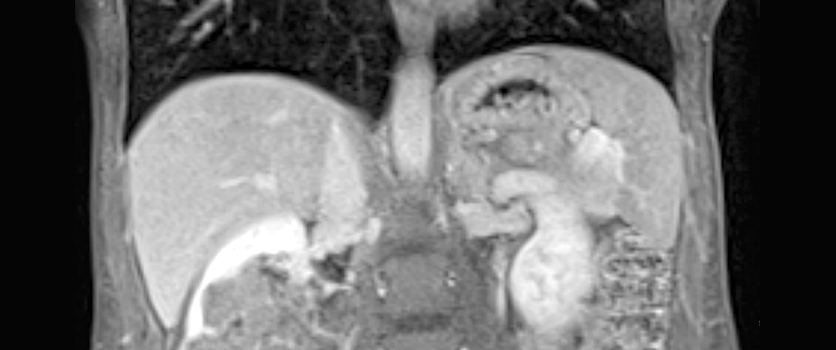
Advanced Body Imaging
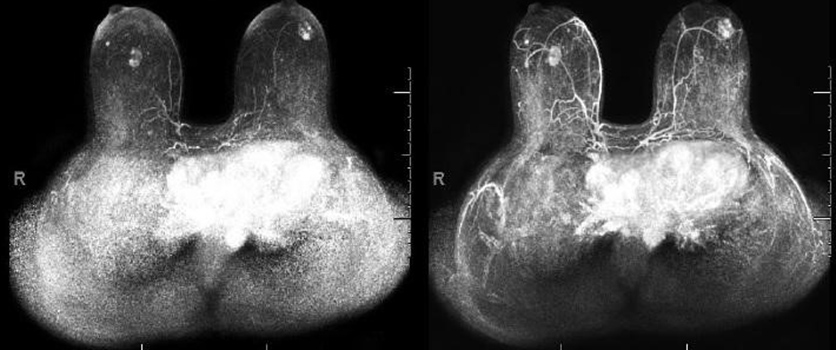
Breast Imaging
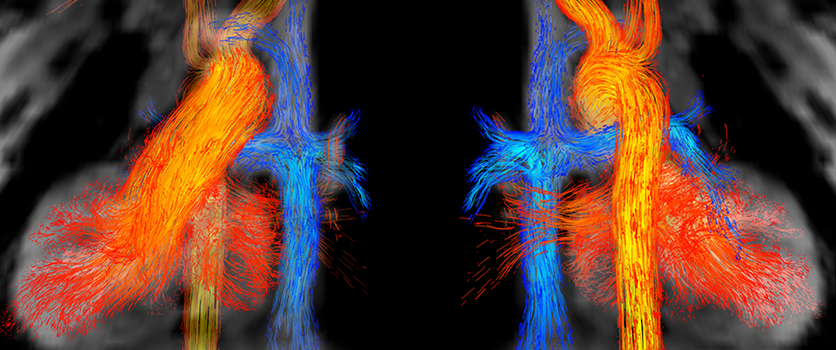
Cardiovascular & Thoracic Imaging
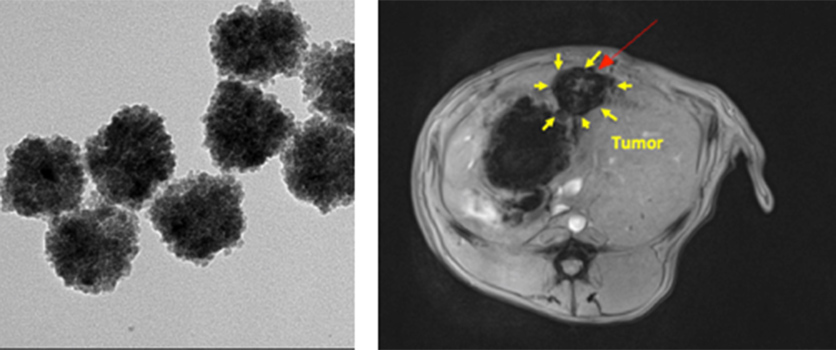
Interventional Radiology & Image-Guided Therapy
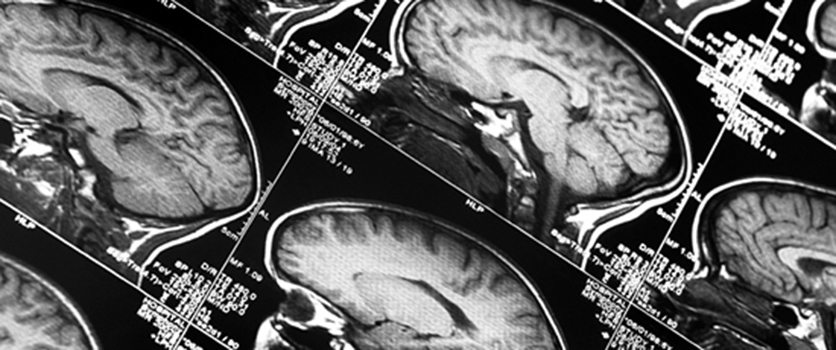
Molecular, Preclinical & Nanomedicine
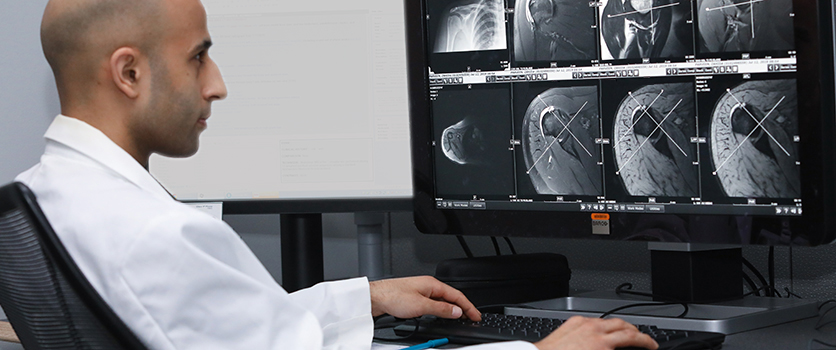
Musculoskeletal Imaging
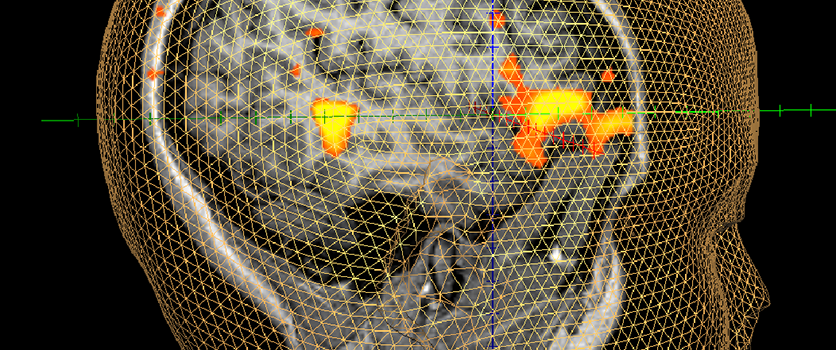
Neuroimaging & Interventions
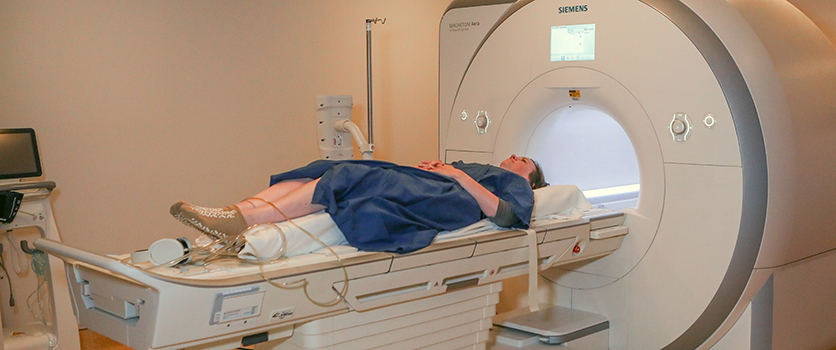
Oncologic Imaging
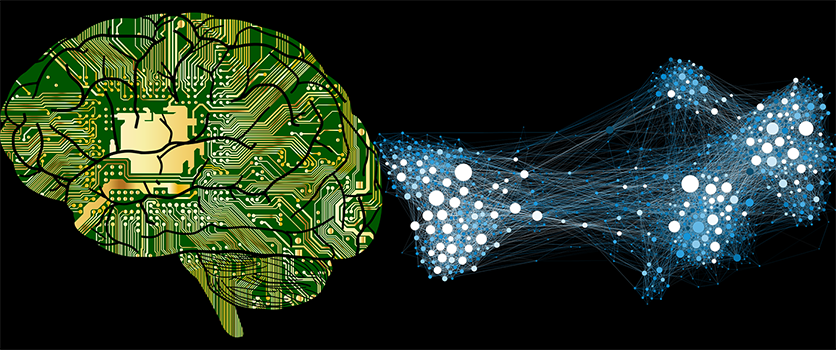
Quantitative Image Analysis & Artificial Intelligence
Research faculty, bradley allen, md, ms.

Chief of Cardiovascular and Thoracic Imaging in the Department of Radiology
Assistant Professor of Radiology (Cardiovascular and Thoracic Imaging)
My research and clinical interests include medical imaging, cardiovascular disease diagnosis and treatment, lung cancer, fluid mechanics, and computer science. As a cardiothoracic radiologist, I am interested in applying advanced imaging techniques, primarily cardiovascular and pulmonary magnetic resonance imaging (MRI), in diseases, cohorts, and clinical scenarios where these techniques have not been previously applied. For further details and images, visit the Northwestern CVMRI Group page.
For more information on my research, please view my Feinberg School of Medicine faculty profile .
Profile, Grants, & Publications
View my profile, grants, & publications on Northwestern Scholars .
Ulas Bagci, PhD
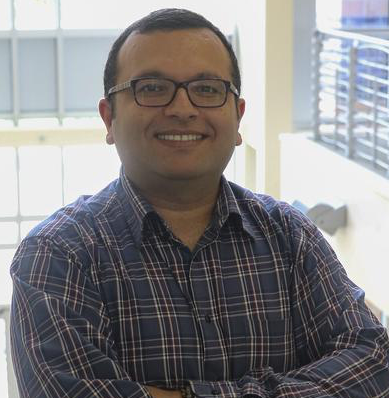
Associate Professor of Radiology (Basic and Translational Radiology Research)
View my profile, grants, & publications on Northwestern Scholars.
Yu Fen Chen, PhD

Research Assistant Professor of Radiology (Basic and Translational Radiology Research)
My research focuses on applications of MR perfusion methods such as arterial spin labeling (ASL) or dynamic susceptibility contrast (DSC) imaging. Some of my projects include using ASL to study brain changes after sports-related concussion, treatment-related recovery in aphasia patients and single dose DSC-DCE.
Donald Robinson Cantrell, MD, PhD

Assistant Professor of Radiology (Neurointerventional Radiology)
For more information on my research, please view my Feinberg School of Medicine faculty profile.
Mohammed Elbaz, PhD

Assistant Professor of Radiology (Basic and Translational Radiology Research)
My expertise intersects between computer science, medical imaging and applied fluid dynamics. I have 12+ years of experience in medical image analysis research and development in both academia and industry. Recently, I have been focusing my research on cardiovascular hemodynamics, where I employ my technical background in medical image analysis, cardiovascular 4D flow MRI and fluid dynamics to develop methods to improve diagnosis and treatment of heart disease using the state-of-the-art 4D Flow MRI technology. In particular,I have developed methods to utilize 4D Flow MRI for advanced visualization and quantification of 3D time-resolved intra-cardiac blood flow patterns and energetics. For further details, visit my lab's website or the Northwestern CVMRI Group page.
Laleh Golestani Rad, PhD

Assistant Professor of McCormick School of Engineering , Physical Therapy and Human Movement Sciences and Radiology (Basic and Translational Radiology Research)
I am an engineer and scientist with expertise in the application of computational electromagnetic techniques for the safety assessment of medical imaging and therapeutic devices. My work currently focuses on application of computational modeling to guide hardware design, safety assessments, and the optimization of imaging protocols for MRI scans in patients with conductive implants.
For more information on my research, please view my McCormick School of Engineering or my Feinberg School of Medicine faculty profiles.
Kelly Jarvis, PhD

Research Assistant Professor of Radiology
Jeesoo Lee, PhD

With a mechanical engineering Ph.D. background, my expertise lies in flow imaging and analysis for experimental fluid dynamics investigation. My key research interest is developing a multimodality quantitative cardiovascular flow assessment technique to understand cardiovascular fluid dynamics better and improve the diagnosis of cardiovascular diseases. My current work focuses on combining 4D flow MRI, echocardiography, and in-vitro flow modeling to understand valvular heart diseases better.
For more information on my research, please view my Feinberg School of Medicine faculty profile .
View my profile, grants, & publications on Northwestern Scholars .
Daniel Kim, PhD

Knight Family Professor of Cardiac Imaging
Professor of Radiology (Basic and Translational Radiology Research) and McCormick School of Engineering
I am the Director of CV Imaging at the Center for Translational Imaging. My research focuses on development of rapid MRI acquisition and reconstruction methods to address unmet needs in cardiovascular medicine. Our lab focuses on breaking new grounds in cardiovascular MRI by developing innovative pulse sequences and reconstruction methods to address unmet clinical needs in cardiovascular medicine. Building upon active collaboration with radiology and cardiology colleagues, our research activities span from imaging technology development to clinical translation in cardiovascular medicine.
Currently, ongoing projects include:
- Role of diffuse LV fibrosis in patients with atrial fibrillation
- Real-time CMR for diagnosing CAD
- Rapid pediatric CMR without requiring contrast agent or anesthesia
- Advanced CMR assessment of left atrial hemodynamic disorders in atrial fibrillation
- Wideband CMR for predicting pre-implant right heart failure in LVAD candidates
- Wideband CMR for imaging patients with ICDs
For details and images, visit the Northwestern CVMRI Group page.
Dong-Hyun Kim, PhD

Associate Professor of Radiology (Basic and Translational Radiology Research)
Image-guided medicine is rapidly growing to improve treatment regimens and advancing medical imaging, including magnetic resonance imaging (MRI), computed tomography (CT), radiography, ultrasound, positron emission tomography (PET), and single photon emission computed tomography (SPECT). A combination of modern nanoplatforms with high performance in imaging and therapeutics may be critical to improve medical outcomes.
One of emerging fields is image-guided therapy using various nanoparticles. Therapies include basic bench, preclinical in vitro/in vivo and clinical researches combining synthesis of multifunctional nanoparticle and tracking/navigation tools to improve accuracy and outcomes of the therapeutics. Most of the emerging interventional technique such as heat-activated targeted drug delivery, image guided ablation (microwave or HIFU), percutaneous injection gene/bacteria therapy, transcatheter treatments for tumor specific local therapy, serial biopsy, thrombolytic therapy, and so on, can be combined with nanotechnology in clinic.
My research engages in careful design/selection/synthesis of multifunctional imaging/therapeutic nanomaterials with therapeutic agents will be critical for the translational optimization these new image guided medicine techniques. The DHKIM Lab for Biomaterials of Image Guided NanoMedicine has focused on developing various therapeutic/imaging carriers for the treatment of various cancers. Micro/Nanoparticles and their hybrid derivatives have been exploited as vectors for drug/therapeutic delivery and molecular imaging agents of MRI, CT, ultrasound and luminescent/fluorescents. We are working closely with clinicians, medical scientists, biologist and imaging professionals to translate new therapeutic approaches using multifunctional carriers and diagnostic imaging technique to the clinical setting.
Lab Manager: Xiaoke Huang
Amber Leaver, PhD

Research Associate Professor of Radiology (Basic and Translational Radiology Research)
The INMRI research group founded by Dr. Leaver at Northwestern conducts precision neuroimaging research to understand and improve electrical neuromodulation therapies. Our studies encompass several topics spanning mental health and depression, chronic idiopathic tinnitus, noninvasive electrical neuromodulation technologies, and best practices in applied connectomics. Details about my projects can be found on the Leaver Lab website .
View my profile, Grants, & publications on Northwestern Scholars .
Kai Lin, MD, MS

I have a broad background in quantitative cardiovascular imaging, with specific training and expertise in coronary artery MRI. My research is focusing of identify subclinical coronary artery disease (CAD) in patients suffering type 2 diabetes mellitus (T2DM). In addition, I am also interested in evaluating regional myocardial changes in patients with various clinical or subclinical cardiovascular diseases. Recently, I am developing research projects for evaluating cardiovascular responses in treating cancers, immunological and neurodegenerative disorders, such as breast cancer, systemic lupus erythematosus (SLE), Alzheimer’s disease (AD) and Parkinson’s disease (PD). For details and images, visit the Northwestern CVMRI Group page.
Michael Markl, PhD

Vice Chair for Research, Department of Radiology
Lester B. and Frances T. Knight Professor of Cardiac Imaging
Professor of Radiology (Basic and Translational Radiology Research) / McCormick School of Engineering
I am currently the Vice Chair of Research for the Department of Radiology. I have established a strong interdisciplinary research consortium. My research has had a major impact on the diagnosis and management of heart disease and stroke including 1) development of novel imaging techniques for the assessment of cardiac structure, function and hemodynamics, and 2) discovery of mechanisms underlying cardiovascular diseases development and cryptogenic stroke (aortic hemodynamics as a mechanism in the development of BAV aortopathy; retrograde embolization from aortic plaques and left atrial flow dynamics in atrial fibrillation as risk factors for stroke). I am internationally recognized as the pioneer of 4D flow MRI and work in this area has advanced the understanding of cardiovascular disease processes as well as enhanced patient care. I have created a highly successful and inseminating training environment in MRI technique development and translational imaging research. For details and images, visit the Northwestern CVMRI Group page .
Todd Parrish, PhD

Professor of Radiology (Basic and Translational Radiology Research) , McCormick School of Engineering and Physical Therapy and Human Movement Sciences
I have a strong expertise in image processing and neuroimaging with a special emphasis on MR based methods. My group and I have been successful in using advanced neuroimaging methods to demonstrate changes in BOLD, diffusion, perfusion, magnetization transfer and structural measures associated with function, memory and learning in the brain as well as movement, sensory, and pain in the spinal cord. I have a long history of methods development and application of neuroimaging methods to pathologic and clinical conditions. My current interests are developing novel methodologies to explore brain physiology to generate new imaging techniques to study the brain. These areas include neurovascular physiology, perfusion/permeability in tissue, multimodal imaging and image analysis, mechanisms of spinal cord structure and function, the use of infrared thermometry for intraoperative functional mapping in awake surgery, and application of machine learning to medical images. I have extensive experience conducting multi-center neuroimaging studies and understand the issues well. For details and images, visit the Parrish Neuroimaging Laboratory .
Daniele Procissi, PhD

Research Professor of Radiology (Basic and Translational Radiology Research)
My research projects focuses on preclinical Molecular Imaging using MRI, PET and CT.
View my Profile, grants, & publications on Northwestern Scholars .
Ann Ragin, PhD

My research projects include Quantitative Magnetic Resonance Imaging strategies for in vivo measurement of the brain to investigate effects of aging and of viruses, particularly HIV infection. Brain network analysis to investigate effects of aging and for early detection of neural injury. Collaborative projects involve applications of 4D flow imaging to investigate alterations in cerebral blood flow and relation to brain status. For details and images, visit the Northwestern CVMRI Group page.
Yury Velichko, PhD
My scientific interests overlap in the areas of biomaterials, anticancer drug development, quantitative imaging and therapeutic response assessment. With a background in molecular physics and informatics, I strive to apply concepts from one field to questions in another. I am also the manager of the Quantitative Imaging Core Laboratory (QICL) at Northwestern University - Feinberg School of Medicine.
Lirong Yan, PhD
Dr. Yan is a tenured Associate Professor of Radiology at Northwestern University Feinberg School of Medicine. Before she joined Northwestern University in 2022, she was a tenure-track Assistant Professor at the University of Southern California. Dr. Yan directs the Laboratory for Neurovascular Imaging Technology and Translation (NITT) at Department of Radiology. The research of her group focuses on developing novel MRI techniques for cerebral vascular and perfusion imaging (e.g., arterial spin labeling). Her research expertise includes MRI pulse sequence development, fast image acquisition and reconstruction, image processing, etc. Over the last decade, Dr. Yan and her team have developed several cutting-edged MRI techniques, including non-contrast enhanced time-resolved rapid 4-dimensional MR angiography, cerebrovascular territory mapping, cerebral arterial compliance and pulsatility, concurrent BOLD/ASL, etc.
Dr. Yan is also interested in translating novel MRI technology into a variety of clinical applications, such as cerebrovascular disease (stroke, intracranial atherosclerosis, arteriovenous malformation, moyamoya disease) and neurodegenerative disease (Alzheimer’s disease, vascular dementia, aging). The mission of Dr. Yan’s research program is to develop non-invasive diagnostic MR imaging tools for cerebrovascular diseases and new imaging biomarkers for neurodegenerative diseases.
Follow Radiology on Facebook Twitter Instagram LinkedIn
- See us on linkedin
- See us on twitter
- See us on instagram
- See us on flickr
- See us on youtube

Throughout its history, the Stanford Department of Radiology has worked continuously to develop the infrastructure necessary to expand interdisciplinary research efforts in anatomic imaging, instrumentation development, molecular imaging, nanotechnology, information sciences, systems biology, and interventional therapeutic advances. Coupling this rich biomedical imaging foundation with an energetic, forward thinking, and creative faculty and staff, we are able to introduce leading-edge imaging solutions and technology to other research communities and into clinical practice.
Our Department is made up of five primary research divisions with each providing specific areas of focus but all collaborating in a highly interdisciplinary environment. These five Divisions (with year established) are:
- Radiological Sciences Laboratory (RSL) (established 1990)
- Molecular Imaging Program at Stanford (MIPS) (established 2003)
- Integrative Biomedical Imaging Informatics at Stanford (IBIIS) (established 2008)
- Canary Center at Stanford for Cancer Early Detection (established 2009)
- Precision Health and Integrated Diagnostics Center at Stanford (PHIND) (established 2017)
Stanford Radiology has been among the top ten NIH-funded radiology departments each year since 2005. Please visit the Academy of Radiology Research for a complete list of NIH funding to radiology departments nationwide.
Our excellent team, including faculty, staff, and trainees, excels at maintaining Stanford Radiology as a strong academic leader with recognized excellence in clinical and basic research. For details of NIH funding, please search NIH RePORTER for Stanford University Radiology.
Research Divisions
- Canary Center
Imaging Support for Non-Funded Research application and website
- Visit ISNFR Site
Research Cores & Centers
3d and quantitative (3dq) imaging.
Through interdisciplinary collaboration, Stanford Radiology's 3DQ Imaging Lab develops and applies innovative techniques for the efficient quantitative analysis and display of medical imaging data used in training, research, and the delivery of patient care.
Biostatistics
Stanford's Health Research and Policy, Division of Biostatistics, is involved in the research activities of every clinical division in the School of Medicine, many basic science departments, as well as national efforts. The Biostatistics Division expects to be an integral part of the growth of biomedical science in the near and long term.
Cell/Molecular Biology
Part of the Canary Center at Stanford for Cancer Early Detection, the Cell/Molecular Biology Core facilitates the development of tools for early diagnosis of cancers. Well equipped, the Core develops and characterizes antibody and ligand-based probes for targeted molecular imaging, thus supporting the development of highly sensitive multifunctional optical, PET and MRI probes for imaging cancers by targeting cancer-specific cellular targets.
One of the basic Research Cores at the Canary Center at Stanford for Cancer Early Detection, the Chemistry Core offers instrumentation capability for synthesis, analysis, and characterization of both small and large biologically significant molecules. The Core's chemists design and develop novel molecular agents for both in vivo and in vitro early detection of cancer. Molecular imaging agents in development include optical, photoacoustic, and multimodality probes, as well as agents for non-imaging strategies such as blood biomarker sensors.
Computational Modeling
Stanford Radiology's Integrative Biomedical Imaging Informatics at Stanford (IBIIS) offers critical computational modeling capabilities. This Core is developing the capability to collect annotated imaging, clinical and molecular data, and integrate them by creating databases that encode the relationships among them. These pioneering methods are improving the diagnostic and treatment planning value of images and leading the way to personalized, less-invasive approaches to early detection and treatment, while also improving our understanding of human biology and disease.
Magnetic Resonance Imaging (MRI)
The Richard M. Lucas Center for Imaging houses facilities for MR imaging at multiple fields and for magnetic resonance spectroscopy (MRS). Stanford Radiology's MR group also maintains and operates a 7T small bore system in the small animal imaging lab (SCI3). Members of the Radiological Sciences Lab (RSL) have pioneered MRI/MRS technology while developing new techniques that benefit patients with stroke, cancer, heart disease, and brain disorders. MRI research conducted at the Lucas Center includes collaborative and original research using human subjects and also intact animal models.
Medical Mixed Reality
The goal of medical mixed reality is to improve patient care by projecting patient data (images, measurements, interventional plans) directly onto the patient's body. This technology enables physicians to look inside the patient to see anatomy, function and disease in its actual location, thereby improving diagnosis, disease assessment, treatment planning and procedure guidance. At IMMERS, we aim to bring together researchers and physicians across Stanford and work with industry partners to envision, enable, and enact solutions to real challenges in healthcare. Furthermore, we work to link numerous AR and virtual reality (VR) groups across campus for efficient collaboration.
The Proteomics Core Facility in the Canary Center at Stanford for Cancer Early Detection is a state-of-the-art mass spectrometry resource dedicated to the discovery and verification of blood-based protein biomarkers. This Core is developing and implementing a high throughput biomarker verification platform that exploits magnetic nanoparticle-facilitated immunoaffinity capture as a prelude to mass spectrometric biomarker quantification.
Radiochemistry and Cyclotron
The Radiochemistry Facility and Cyclotron are located on the first floor of the Lucas Expansion building. The cyclotron produces radioisotopes for both clinical and research use and is surrounded by an FDG production lab and research hot labs. Used for production of research radiopharmaceuticals that support clinical and PET studies at the Stanford University Medical Center and the SCI3, these hot labs also house radiochemistry research for the development of new radiopharmaceuticals.
New Clinical Research Radiopharmaceutical Request Questionnaire Form
In-Vivo Imaging
Housed in the Clark Building, the Stanford Center for Innovation in In-Vivo Imaging (SCI3) applies and advances technologies for in-vivo biological assessment and imaging in animal models. The lab's instrumentation supports the development of reagents and approaches that reveal in-vivo changes at the molecular and cellular levels to gain a greater understanding from animal models. The SCI3 lab provides a test bed for evaluating human imaging reagents and strategies building upon the enrichment of data sets, as well as the flexibility and rapid analyses garnered from animal models.
Training Grants
Stanford Cancer Imaging Training (SCIT) Program (NIH/NCI T32 CA 09695) Contact: Sofia Gonzales
Stanford Molecular Imaging Scholars - SMIS (NIH/NCI 2R25CA118681-06) Contact: Sofia Gonzales
Cancer Systems Biology Scholars - CSBS (NIH) Contact: Pornprang Plangsrisakul
Center Grants
The National Center for Advanced Magnetic Resonance Technology at Stanford (CAMRT - P41) PI: Gary Glover, PhD
The Center for Cancer Nanotechnology Excellence and Translation (CCNE-T - U54) PI: Jianghong Rao, PhD
Cancer Center for Systems Biology (CCSB - U54) PI: Sylvia Plevritis, PhD
- Original Article
- Open access
- Published: 23 November 2020
The 100 top-cited meta-analyses of diagnostic accuracy in radiology journals: a bibliometric analysis
- Kaspar L. Yaxley 1 &
- Minh-Son To ORCID: orcid.org/0000-0002-8060-6218 2 , 3
Insights into Imaging volume 11 , Article number: 123 ( 2020 ) Cite this article
4878 Accesses
8 Citations
3 Altmetric
Metrics details
To identify the 100 top-cited meta-analyses of diagnostic accuracy studies published in radiology, medical imaging and nuclear medicine journals.
A PubMed search with pre-defined criteria was performed. The 100 top-cited articles meta-analyses were retrieved, using a custom Python script and the Scopus Application Programming Interface (Elsevier). Publication, citation and affiliation details were extracted from each meta-analysis. No formal statistical analysis was performed.
The top meta-analysis was cited 394 times, the 100th meta-analysis 38 times. The USA was the top country represented in the papers (33 meta-analyses) followed by The Netherlands, China and Germany. The journal Radiology published 24 studies. The most common modality reported was positron emission tomography (PET) or PET computed tomography (36 instances), followed by magnetic resonance imaging (30 instances) and computed tomography (27 instances). Cardiac (19 meta-analyses), abdominal (18 meta-analyses), followed by neurological (12 meta-analyses) investigations were the most frequently encountered in the top 100 cited meta-analyses.
Conclusions
The 100 top-cited meta-analyses encompass a broad range of imaging modalities and body regions. This may comprise a useful resource for identifying influential evidence-based diagnostic accuracy information in radiology.
Introduction
Rapid advancements in medical imaging technologies have resulted in a corresponding proliferation of diagnostic modalities becoming available to clinicians for investigating many medical conditions. Choice of modality is often influenced by factors including cost, local availability, familiarity and patient characteristics (e.g. age and co-morbidities). However, diagnostic performance remains fundamental to appropriate selection as it provides information on the likelihood of true and false positives, likelihood of true and false negatives, and post-test probability of disease, all of which exhibit a strong relationship with downstream health outcomes. Choice of modality in a particular clinical situation is also often associated with a trade-off between these variables. For example, screening tests should be cost-effective, sensitive and non-invasive, but come at the expense of false positives. Understanding diagnostic accuracy is therefore critical for clinical decision making.
Diagnostic performance may be assessed by a number of parameters, including sensitivity and specificity, positive and negative predictive values, likelihood ratios, diagnostic odds ratios, and areas under the receiver operator characteristic curve [ 1 ]. These measures are especially relevant to diagnostic radiology, given the central role radiologists play in aiding clinicians in reducing diagnostic uncertainty by selecting the most appropriate imaging modalities and interpreting imaging findings. However, owing to the sheer number of diseases, imaging modalities, and the rapid expansion of the biomedical literature, keeping abreast of all such diagnostic information can be challenging for the practicing radiologist and other clinicians.
Meta-analyses of diagnostic test accuracy use statistical techniques for combining findings from multiple studies, providing pooled estimates of diagnostic accuracy measures such as sensitivity and specificity and an estimate of the uncertainty associated with these. These may provide more precise estimates of the diagnostic performance of imaging modalities compared to what might be obtainable from a single diagnostic accuracy study.
Although such studies provide synthesised, quantitative information on a certain topic, the onus still lies with the reader to identify the most relevant literature. Moreover, there are limited systematic reviews on meta-analyses of diagnostic accuracy in radiology and medical imaging, to our knowledge [ 2 ].
Bibliometric analyses offer one approach for identifying key studies and is a type of literature analysis comprising a collection of quantitative and statistical tools for evaluating the quality and impact of the literature associated with a certain topic or field [ 3 ]. It is a useful technique for revealing linkages among research articles and the utility of published work to researchers working in a particular field. Bibliometric analysis is founded on the assumption that the most important research findings are published in academic journals and that research is predominantly based on studies previously published in such journals [ 4 ]. Citation analysis is a commonly employed bibliometric method which attempts to quantify the impact of a study by the number of citations it has received. Such analysis may also permit an assessment of the impact of specific authors and their affiliated institutions, research journals and countries of origin. Citation counts are influenced by factors such as the level and hierarchy of evidence [ 5 ], the presence of statistically significant results [ 6 , 7 ], and title length [ 8 ]. Indeed, similar findings have been corroborated in the radiology literature [ 9 ].
Although a bibliometric analysis does not provide a detailed review on a topic of interest, it may enable the reader to quickly and conveniently identify the influential articles in that topic. The purpose of our study was therefore to perform a bibliometric analysis and identify the 100 top-cited meta-analyses of diagnostic accuracy published in radiology, medical imaging and nuclear medicine journals.
Materials and methods
The authors declare no conflict of interests. Research ethics approval was not required for this bibliometric study.
Search strategy
The literature search was performed in PubMed. The search filter incorporated terms for retrieving meta-analyses and was limited to those journals listed in the category “Radiology, Nuclear Medicine and Imaging” by Journal Citation Reports [ 10 ]. The search was restricted to dates from the 1 January 2005 through 31 December 2019, since the landmark paper on bivariate analysis of sensitivity and specificity was published in 2005 [ 11 ]. Full details of the search string are provided in Additional file 1 . The search was performed on the 1 April 2020.

Study identification and data extraction
Both authors independently screened the title and abstract of studies identified from the search. Only meta-analyses of diagnostic accuracy studies in radiology were included in the study. For inclusion, studies had to perform a quantitative meta-analysis involving at least one imaging modality (e.g. x-ray, computed tomography, magnetic resonance imaging, ultrasound), be focused on a specific disease or condition, and report at least one diagnostic performance metric such as sensitivity, specificity, accuracy, odds ratio, likelihood ratio or area under the receiver operator characteristic curve. Studies identified by the original literature search but were excluded included reviews of diagnostic accuracy which did not perform a formal meta-analysis (e.g. due to inadequate data), studies concerned with prediction or prognosis rather than diagnosis and studies that were meta-analyses but were not, on closer inspection, concerned with diagnostic accuracy measures. Any discrepancies were resolved by mutual agreement.
Citation counts were retrieved on the 2 April 2020 from Scopus using a custom Python script developed and implemented by one of the authors, utilising the Scopus Application Programming Interface (Elsevier). The 100 top-cited meta-analyses were then identified from these retrieved citation counts and selected for further analysis. While meta-analyses were restricted to those published in radiology and medical imaging journals, citations originated from the wider medical literature in order to broadly capture the influence of these studies. The following information was extracted from these articles: (1) journal, (2) year of publication, (3) number of authors, (4) first and corresponding author, (5) institutional affiliations, (6) country of origin. The abstracts and/or full-text articles were also analysed to determine the imaging modalities reported, the anatomical region of interest and whether or not diagnostic accuracy was compared between modalities. The impact factor of individual journals was retrieved from the 2018 edition of Journal Citation Reports [ 10 ].
Data analysis
Descriptive statistics were used to analyse the data. No statistical tests were performed. Data analysis was carried out using MATLAB 2019b (The MathWorks Inc).
The search yielded 1075 results. Of these, the top meta-analysis was cited 394 times, the 100th meta-analysis 38 times. The mean (median) number of citations for the 100 top-cited meta-analyses was 90.1 (62.5). The full list of meta-analyses is given in Additional file 1 : Table S1. Although the search criteria allowed for meta-analyses published up to the end of 2019, no papers published in 2018 or 2019 featured in the top 100. The publication year with the most top meta-analyses was 2012 (16), followed by 2008 and 2014 (12 each) (Fig. 1 ).
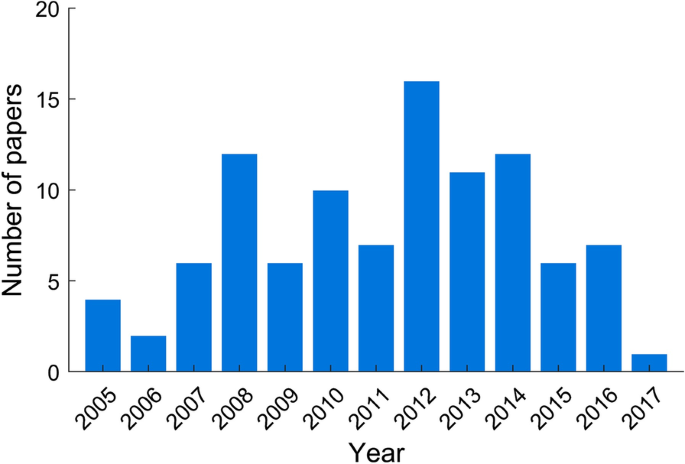
Number of top-cited meta-analyses by publication year. Histogram showing the number of top 100 meta-analyses published each year
Each paper had an average of 5.4 authors (minimum one, maximum 25). There were 17 authors with three or more meta-analyses in the top 100. The authors with the most citations were Bipat and Stoker who were associated with nine and seven papers, and a total of 1633 and 1595 citations, respectively (Table 1 ). Seven of these papers were in the top 10 most cited meta-analyses and were concerned predominantly with imaging of gastro-intestinal malignancies (colorectal cancer and pancreatic adenocarcinoma) and common acute gastro-intestinal inflammatory conditions (appendicitis, cholecystitis and diverticulitis).
A total of 254 affiliations were retrieved. There were 188 institutions represented (Table 2 ). Among these, the University of Amsterdam was represented the most times (10 papers), followed by China Medical University Hospital Taichung (seven papers), the University of Michigan Medical School (five papers) and VA Ann Arbor Healthcare System (five papers). These papers were again predominantly concerned with imaging of gastrointestinal malignancies and inflammatory conditions as well as urological malignancies, endocrine organ malignancies and ischaemic heart disease. In total, 23 countries were uniquely represented in a meta-analysis (Table 3 ). The USA appeared in 33 papers, followed by China and The Netherlands (both 17 papers), and the UK (10 papers).
The 100 top-cited meta-analyses were published across 28 different journals. Among these, only 15 published two or more 100 top-cited meta-analyses (Table 4 ). The journal Radiology featured the most papers, with 24. This was also the journal with the highest impact factor (7.608).
A broad range of imaging modalities were investigated in the 100 top-cited meta-analyses (Fig. 2 ). The most common modality reported was positron emission tomography (PET) or PET computed tomography (PET-CT), with 36 meta-analyses. Meta-analyses considering PET and/or PET-CT were concerned predominantly with cancer diagnosis and metastatic disease detection with prostate cancer being the most common, followed by colorectal cancer and lymphoma staging. The next most common imaging modality was magnetic resonance imaging (MRI) with 30 meta-analyses and computed tomography (CT) with 27 meta-analyses in which the most common conditions considered were prostate cancer, colorectal cancer and breast cancer for MRI and colorectal cancer and coronary artery disease for CT. Contrast radiography was the least common modality considered and was reported in a single study.
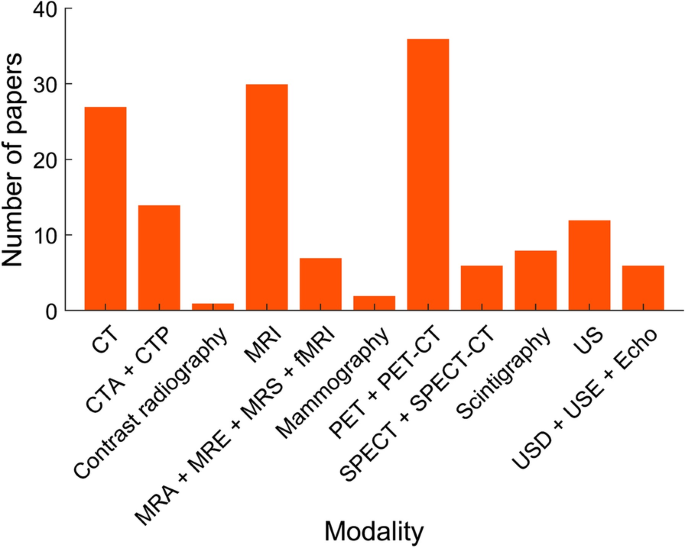
Imaging modalities represented in top-cited meta-analyses. Histogram showing the number of meta-analyses each imaging modality appears in. CT, computed tomography; CTA, CT angiography; MR, magnetic resonance; MRI, MR imaging; MRA, MR angiography; MRE, MR elastography; MRS, MR spectroscopy; fMRI, functional MRI; PET, positron emission tomography; SPECT, single-photon emission CT; US, ultrasound; USD, Doppler US; USE, US elastography; Echo, echocardiography
Body region classification for each study was based on the region of the body deemed most pertinent to the organ or disease process being considered. Where no specific region was identifiable (for instance, neuroendocrine tumours or pyrexia of unknown origin), a classification of ‘General interest’ was assigned. Cardiac (19 papers), abdominal (18 papers), followed by neurological (12 papers) studies were the most frequently encountered in the 100 top-cited meta-analyses (Fig. 3 ).
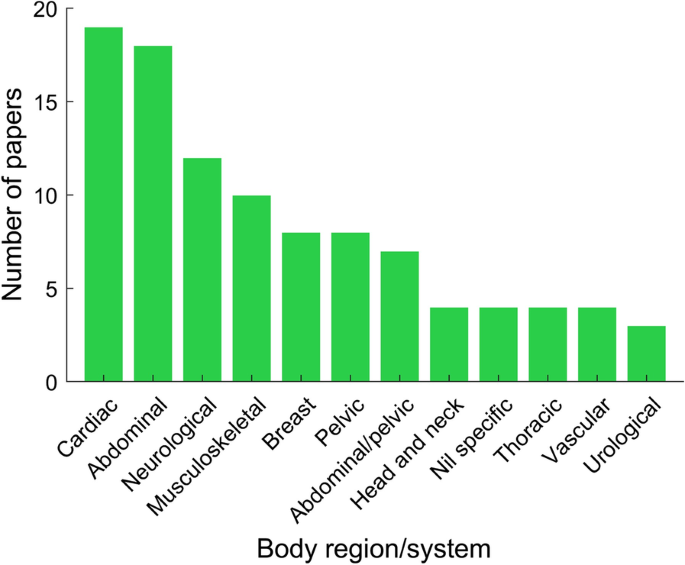
Body regions and organ systems represented in top-cited meta-analyses. Histogram showing the number of meta-analyses each body system appears in
We also found that 46% of the 100 top-cited meta-analyses were comparative diagnostic accuracy studies in which the diagnostic performance of one modality or imaging parameter was compared with one or more alternative modalities or imaging parameter (all against a common reference standard).
Many meta-analyses have investigated the diagnostic accuracy of common imaging modalities in a broad variety of conditions and body systems. In our study of the 100 top-cited meta-analyses, we found that the key imaging studies relate to cardiac, abdominal or neurological investigations. Furthermore, PET, PET-CT and MRI dominated the imaging modalities utilised. These findings attest to the importance of PET-CT in clinical oncology and research and of MRI in general. The interest in PET and PET-CT, in particular, is likely to be multifactorial and reflective of the increased use of PET for cancer staging [ 12 ], technological advancements in PET imaging and the development of new radiotracers as well as increasing interest in the clinical utility of hybrid and molecular imaging techniques [ 13 , 14 ].
While it was unsurprising that studies focusing on cancer diagnosis and staging had the highest citation counts, it was interesting to note a lack of studies associated with lung cancer imaging. This could be reflective of peaking incidence rates of lung cancer in some Western countries due to tobacco control measures [ 15 ] and relatively less interest in new diagnostic tests compared with other malignancies (although we note the increasing interest in lung cancer screening using technologies such as low-dose CT [ 16 ]).
The most commonly cited studies had years of publication that appear to cluster around the period from 2008 to 2014. This may point towards an increase in interest towards diagnostic-accuracy-based meta-analyses in the field of radiology in these years or increasing confidence in the statistical techniques used in such studies (e.g. hierarchical models, which are more complex than methods used in meta-analyses for therapeutic interventions and increasingly used and recommended [ 17 ]). More recent studies may have lower citation counts as they have had less time to be of influence.
We also found that less than half of the meta-analyses compared one imaging modality against another. While such comparative analyses may be more useful in assessing new imaging tests against established modalities and diagnostic pathways, this suggests researchers may be more interested in studies of single modalities. This may reflect the fact that meta-analyses of diagnostic test accuracy, in general, often focus only on a single test and those which do address comparative test accuracy may be poorly designed or biased and difficult to interpret [ 18 ]
To our knowledge, this is the first bibliometric analysis of meta-analyses concerning diagnostic accuracy in radiology. In contrast, bibliometric studies of the general radiology literature are plentiful, for example [ 19 , 20 , 21 ]. In these studies, citation counts for the 100 top-cited articles ranged from 624 to 6447 [ 21 ], 371 to 6931 [ 19 ] and 422 to 7506 [ 20 ]. Even ignoring differences in publication dates, given that the top-cited meta-analysis was associated with 394 citations [ 22 ], meta-analyses of diagnostic accuracy are unlikely to feature substantially in these, or future bibliometric studies of the broader radiology literature. Our study may therefore provide a potential resource for identifying key diagnostic accuracy information related to imaging modalities used in the field of radiology which may be of particular interest to researchers, academics and practising radiologists with an interest in evidence-based diagnosis.
Although there are some differences between databases that report citation counts such as Web of Science, Scopus and Google Scholar [ 23 ], we elected to use Scopus due to the availability of an Application Programming Interface (API). This allowed efficient and complete extraction of author names, affiliations, publication details and citation metrics. One particular advantage of the Scopus database is the Affiliation Identifier that assigns each institution a unique number, thereby enabling aggregation of multiple affiliations from the same institution.
A key focus of bibliometric analysis is citation counts. Importantly, citation counts are influenced by a multitude of factors [ 24 ]. Some of these factors such as structured abstracts [ 25 ] and study design [ 5 ] may reflect the quality of reporting and strength of evidence. In contrast, other factors such as open access [ 26 , 27 , 28 ], and title length [ 8 ] may instead be related to visibility and accessibility. The association between citation counts and quality therefore needs to be considered carefully, especially given the risk of citation bias [ 6 , 7 ], the preferential citing of statistically significant results that may lead to inflated expectations of efficacy. Certain studies may also be preferentially cited based on the reputations of the journals they are published in, even if they may have comparable quality to those published in lesser known journals. As this was a bibliometric study, we did not review the quality and reporting of meta-analyses and these considerations have been addressed elsewhere [ 2 , 29 , 30 , 31 ]. The recently published guideline for reporting meta-analyses of diagnostic test accuracy, the PRISMA-DTA statement [ 32 ], provides a 27-item checklist for reporting such studies. Compliance with this reporting framework may be the subject of future investigation.
A related issue is that while citation counts, in this instance, may be a useful metric for gauging the extent to which the research community is interested in particular imaging modalities, they do not necessarily reflect clinical outcomes of these modalities or the feasibility of adopting new imaging technologies in clinical practice. This is especially relevant to meta-analyses of diagnostic accuracy which invariably focus on technical measures of diagnostic performance and not on parameters that may be of more clinical interest such as cost-effectiveness, ease of access or patient and clinician acceptability.
Our study had some limitations. First, the Scopus API was the primary tool used for extracting citation counts, authorship, and affiliations. We noted that the affiliations recorded in the retrieved document and affiliation profile were an aggregate of those listed in the published articles. While such an approach prevented the discrimination between first and corresponding author affiliations, it instead afforded the opportunity to capture all distinct institutional affiliations. Thus, in our analysis we did not distinguish between the affiliations of different authors. Second, our search was not limited to radiology-specific journals in the category “Radiology, Nuclear Medicine and Imaging” by Journal Citation Reports (Clarivate Analytics, 2018) [ 10 ]. Instead, we included every journal in the category. Notably, despite conducting a broad search, the meta-analyses retrieved were predominantly published in radiology journals, whereas only several papers were published in cardiovascular imaging or nuclear medicine journals. However, by restricting the search to a single category, relevant meta-analyses published in other general medicine or specialty journals may not have been included. Third, differences in citations may exist between different search databases [ 23 ]. We mitigate this by including an extensive list of meta-analyses, that is of the 100 top-cited papers. Fourth, we restricted our search to meta-analyses due to the fact that these provide concise and readily interpretable summary information of a quantitative nature. However, both systematic reviews and meta-analyses are widely considered to sit at the top of the hierarchy of evidence. While many meta-analyses incorporate a systematic review in order to identify all relevant primary studies, not all systematic reviews incorporate meta-analysis (due to lack of primary studies or significant underlying heterogeneity). Therefore, it is possible that important evidence syntheses may not have been identified by our current work.
There are newer means of assessment of the influence of scientific publications such as Altmetrics which provide information on citations in the broader online and media community and may be complementary to traditional, citation-based metrics. While it is presumed that imaging-based diagnostic accuracy meta-analyses might receive less attention in these domains due to their technical nature, some studies of influential imaging modalities may receive wide attention in the media and this impact has not been evaluated here.
In conclusion, our bibliometric study provides a collation of the most influential meta-analyses of diagnostic accuracy in radiology as measured by citation counts. The 100 top-cited meta-analyses encompass a broad range of imaging modalities and body regions. However, we emphasise that citation count and quality should not be confounded, and that individual papers be considered on their own merits.
Availability of data and materials
All data analysed in this study is available in the main text or supplementary section.
Abbreviations
Application Programming Interface
Mallett S, Halligan S, Thompson M, Collins GS, Altman DG (2012) Interpreting diagnostic accuracy studies for patient care. BMJ 345:e3999
Article Google Scholar
McGrath TA, McInnes MD, Korevaar DA, Bossuyt PM (2016) Meta-analyses of diagnostic accuracy in imaging journals: analysis of pooling techniques and their effect on summary estimates of diagnostic accuracy. Radiology 281(1):78–85
Choudhri AF, Siddiqui A, Khan NR, Cohen HL (2015) Understanding bibliometric parameters and analysis. Radiographics 35(3):736–746
van Raan T (2003) The use of bibliometric analysis in research performance assessment and monitoring of interdisciplinary scientific developments. Theory Praxis 12(1):20–29
Google Scholar
Patsopoulos NA, Analatos AA, Ioannidis JP (2005) Relative citation impact of various study designs in the health sciences. JAMA 293(19):2362–2366
Article CAS Google Scholar
Frank RA, Sharifabadi AD, Salameh JP, McGrath TA, Kraaijpoel N, Dang W et al (2019) Citation bias in imaging research: are studies with higher diagnostic accuracy estimates cited more often? Eur Radiol 29(4):1657–1664
Jannot AS, Agoritsas T, Gayet-Ageron A, Perneger TV (2013) Citation bias favoring statistically significant studies was present in medical research. J Clin Epidemiol 66(3):296–301
Letchford A, Moat HS, Preis T (2015) The advantage of short paper titles. R Soc Open Sci 2(8):150266
Shekhani HN, Shariff S, Bhulani N, Khosa F, Hanna TN (2017) Bibliometric analysis of manuscript characteristics that influence citations: a comparison of six major radiology journals. AJR Am J Roentgenol 209(6):1191–1196
Analytics C. 2018 Journal Impact Factor, Journal Citation Reports 2019
Reitsma JB, Glas AS, Rutjes AW, Scholten RJ, Bossuyt PM, Zwinderman AH (2005) Bivariate analysis of sensitivity and specificity produces informative summary measures in diagnostic reviews. J Clin Epidemiol 58(10):982–990
Hillner BE, Tosteson AN, Song Y, Tosteson TD, Onega T, Goodman DC et al (2012) Growth in the use of PET for six cancer types after coverage by medicare: additive or replacement? J Am Coll Radiol 9(1):33–41
de Galiza Barbosa F, Delso G, Ter Voert EE, Huellner MW, Herrmann K, Veit-Haibach P (2016) Multi-technique hybrid imaging in PET/CT and PET/MR: what does the future hold? Clin Radiol 71(7):660–672
Slomka PJ, Pan T, Germano G (2016) Recent Advances and Future Progress in PET Instrumentation. Semin Nucl Med 46(1):5–19
Barta JA, Powell CA, Wisnivesky JP (2019) Global Epidemiology of Lung Cancer. Ann Glob Health 85(1):8
Chiles C (2014) Lung cancer screening with low-dose computed tomography. Radiol Clin North Am 52(1):27–46
Lee J, Kim KW, Choi SH, Huh J, Park SH (2015) Systematic review and meta-analysis of studies evaluating diagnostic test accuracy: a practical review for clinical researchers-part II. Statistical methods of meta-analysis. Korean J Radiol 16(6):1188–1196
Leeflang MMG, Reitsma JB (2018) Systematic reviews and meta-analyses addressing comparative test accuracy questions. Diagn Progn Res 2(1):17
Yoon DY, Yun EJ, Ku YJ, Baek S, Lim KJ, Seo YL et al (2013) Citation classics in radiology journals: the 100 top-cited articles, 1945–2012. AJR Am J Roentgenol 201(3):471–481
Pagni M, Khan NR, Cohen HL, Choudhri AF (2014) Highly cited works in radiology: the top 100 cited articles in radiologic journals. Acad Radiol 21(8):1056–1066
Brinjikji W, Klunder A, Kallmes DF (2013) The 100 most-cited articles in the imaging literature. Radiology 269(1):272–276
Horsthuis K, Bipat S, Bennink RJ, Stoker J (2008) Inflammatory bowel disease diagnosed with US, MR, scintigraphy, and CT: meta-analysis of prospective studies. Radiology 247(1):64–79
Kulkarni AV, Aziz B, Shams I, Busse JW (2009) Comparisons of citations in Web of Science, Scopus, and Google Scholar for articles published in general medical journals. JAMA 302(10):1092–1096
Tahamtan I, Safipour Afshar A, Ahamdzadeh K (2016) Factors affecting number of citations: a comprehensive review of the literature. Scientometrics 107(3):1195–1225
Lokker C, McKibbon KA, McKinlay RJ, Wilczynski NL, Haynes RB (2008) Prediction of citation counts for clinical articles at two years using data available within three weeks of publication: retrospective cohort study. BMJ 336(7645):655–657
Eysenbach G (2006) Citation advantage of open access articles. PLoS Biol 4(5):e157
Craig ID, Plum A, Mcveigh ME, Pringle J, Amin M (2007) Do open access articles have greater citation impact?: a critical review of the literature. J Informetr 1(3):239–248
Davis PM, Lewenstein BV, Simon DH, Booth JG, Connolly MJ (2008) Open access publishing, article downloads, and citations: randomised controlled trial. BMJ 337:a568
McInnes MD, Bossuyt PM (2015) Pitfalls of systematic reviews and meta-analyses in imaging research. Radiology 277(1):13–21
McGrath TA, Alabousi M, Skidmore B, Korevaar DA, Bossuyt PMM, Moher D et al (2017) Recommendations for reporting of systematic reviews and meta-analyses of diagnostic test accuracy: a systematic review. Syst Rev 6(1):194
Tunis AS, McInnes MDF, Hanna R, Esmail K (2013) Association of study quality with completeness of reporting: have completeness of reporting and quality of systematic reviews and meta-analyses in major radiology journals changed since publication of the PRISMA statement? Radiology 269(2):413–426
McInnes MDF, Moher D, Thombs BD, McGrath TA, Bossuyt PM, the PRISMA-DTA Group et al (2018) Preferred reporting items for a systematic review and meta-analysis of diagnostic test accuracy studies: the PRISMA-DTA statement. JAMA 319(4):388–396
Download references
No funding was received for this study.
Author information
Authors and affiliations.
Centre for Evidence-Based Medicine, University of Oxford, Oxford, UK
Kaspar L. Yaxley
Division of Surgery and Perioperative Medicine, Flinders Medical Centre, Bedford Drive, Bedford Park, SA, 5042, Australia
Minh-Son To
College of Medicine and Public Health, Flinders University, Bedford Park, SA, Australia
You can also search for this author in PubMed Google Scholar
Contributions
All authors contributed equally in the collection and analysis of data, and in the preparation of the manuscript. All authors read and approved the final manuscript.
Corresponding author
Correspondence to Minh-Son To .
Ethics declarations
Ethics approval and consent to participate.
Not applicable.
Consent for publication
Competing interests.
The authors declare no competing interests.
Additional information
Publisher's note.
Springer Nature remains neutral with regard to jurisdictional claims in published maps and institutional affiliations.
Supplementary information
Additional file 1:.
PubMed search string and full list of meta-analyses.
Rights and permissions
Open Access This article is licensed under a Creative Commons Attribution 4.0 International License, which permits use, sharing, adaptation, distribution and reproduction in any medium or format, as long as you give appropriate credit to the original author(s) and the source, provide a link to the Creative Commons licence, and indicate if changes were made. The images or other third party material in this article are included in the article's Creative Commons licence, unless indicated otherwise in a credit line to the material. If material is not included in the article's Creative Commons licence and your intended use is not permitted by statutory regulation or exceeds the permitted use, you will need to obtain permission directly from the copyright holder. To view a copy of this licence, visit http://creativecommons.org/licenses/by/4.0/ .
Reprints and permissions
About this article
Cite this article.
Yaxley, K.L., To, MS. The 100 top-cited meta-analyses of diagnostic accuracy in radiology journals: a bibliometric analysis. Insights Imaging 11 , 123 (2020). https://doi.org/10.1186/s13244-020-00936-w
Download citation
Received : 31 July 2020
Accepted : 27 October 2020
Published : 23 November 2020
DOI : https://doi.org/10.1186/s13244-020-00936-w
Share this article
Anyone you share the following link with will be able to read this content:
Sorry, a shareable link is not currently available for this article.
Provided by the Springer Nature SharedIt content-sharing initiative
- Meta-analysis
- Bibliometrics
- Medical imaging
Thank you for visiting nature.com. You are using a browser version with limited support for CSS. To obtain the best experience, we recommend you use a more up to date browser (or turn off compatibility mode in Internet Explorer). In the meantime, to ensure continued support, we are displaying the site without styles and JavaScript.
- View all journals
Medical imaging articles from across Nature Portfolio
Medical imaging comprises different imaging modalities and processes to image human body for diagnostic and treatment purposes. It is also used to follow the course of a disease already diagnosed and/or treated.
Related Subjects
- Bone imaging
- Brain imaging
- Magnetic resonance imaging
- Molecular imaging
- Radiography
- Radionuclide imaging
- Three-dimensional imaging
- Ultrasonography
- Whole body imaging
Latest Research and Reviews
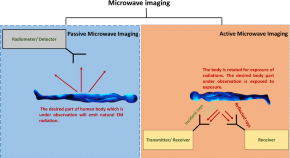
Emerging paradigms in microwave imaging technology for biomedical applications: unleashing the power of artificial intelligence
- Nazish Khalid
- Muhammad Zubair
- Yehia Massoud
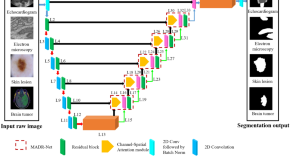
MADR-Net: multi-level attention dilated residual neural network for segmentation of medical images
- Keerthiveena Balraj
- Manojkumar Ramteke
- Anurag S. Rathore
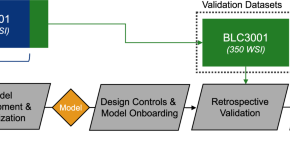
Development and deployment of a histopathology-based deep learning algorithm for patient prescreening in a clinical trial
Here, the authors develop a deep-learning algorithm to predict biomarkers from histopathological imaging in advanced urothelial cancer patients. This method detects suitable patients for targeted therapy clinical trials with a significant reduction in molecular testing, providing cost and time savings in real-world clinical settings.
- Albert Juan Ramon
- Chaitanya Parmar
- Kristopher A. Standish
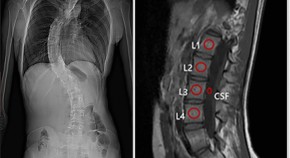
MRI-based vertebral bone quality score as a novel bone status marker of patients with adolescent idiopathic scoliosis
- Dan-dan Yang
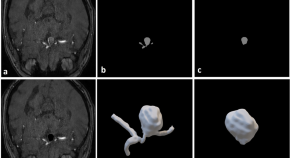
Time-of-Flight MRA of Intracranial Aneurysms with Interval Surveillance, Clinical Segmentation and Annotations
- Chloe M. de Nys
- Ee Shern Liang
- Mark C. Allenby

Endovascular treatment of stroke in the late time window with large vessel occlusion using the ASPECTS as an imaging screening criterion
- Changchun Jiang
News and Comment
Refractive shifts in astronauts during spaceflight: mechanisms, countermeasures, and future directions for in-flight measurements.
- Kelsey Vineyard
- Andrew G. Lee
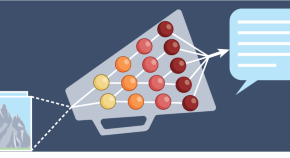
Adapting vision–language AI models to cardiology tasks
Vision–language models can be trained to read cardiac ultrasound images with implications for improving clinical workflows, but additional development and validation will be required before such models can replace humans.
- Rima Arnaout
Artificial intelligence chatbot interpretation of ophthalmic multimodal imaging cases
- Andrew Mihalache
- Ryan S. Huang
- Rajeev H. Muni
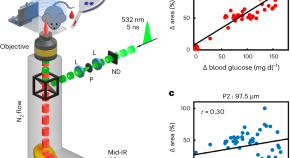
Blood glucose concentration measurement without finger pricking
A new sensor that detects optoacoustic signals generated by mid-infrared light enables measurement of glucose concentration from intracutaneous tissue rich in blood. This technology does not rely on glucose measurements in interstitial fluid or blood sampling and might yield the next generation of non-invasive glucose-sensing devices for improved diabetes management.
Enhancing diagnostic precision in liver lesion analysis using a deep learning-based system: opportunities and challenges
A recent study reported the development and validation of the Liver Artificial Intelligence Diagnosis System (LiAIDS), a fully automated system that integrates deep learning for the diagnosis of liver lesions on the basis of contrast-enhanced CT scans and clinical information. This tool improved diagnostic precision, surpassed the accuracy of junior radiologists (and equalled that of senior radiologists) and streamlined patient triage. These advances underscore the potential of artificial intelligence to enhance hepatology care, although challenges to widespread clinical implementation remain.
- Jeong Min Lee
- Jae Seok Bae
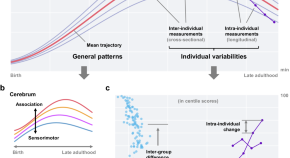
Population imaging cerebellar growth for personalized neuroscience
Growth chart studies of the human cerebellum, which is increasingly recognized as pivotal for cognitive development, are rare. Gaiser and colleagues utilized population-level neuroimaging to unveil cerebellar growth charts from childhood to adolescence, offering insights into brain development.
- Zi-Xuan Zhou
- Xi-Nian Zuo
Quick links
- Explore articles by subject
- Guide to authors
- Editorial policies
An official website of the United States government
The .gov means it’s official. Federal government websites often end in .gov or .mil. Before sharing sensitive information, make sure you’re on a federal government site.
The site is secure. The https:// ensures that you are connecting to the official website and that any information you provide is encrypted and transmitted securely.
- Publications
- Account settings
Preview improvements coming to the PMC website in October 2024. Learn More or Try it out now .
- Advanced Search
- Journal List
- Eur Radiol Exp
Trends in radiology and experimental research
Francesco sardanelli.
Department of Biomedical Sciences for Health, Università degli Studi di Milano and Unit of Radiology, IRCCS Policlinico San Donato, Via Morandi 30, 20097 San Donato Milanese, Milan Italy
European Radiology Experimental , the new journal launched by the European Society of Radiology, is placed in the context of three general and seven radiology-specific trends. After describing the impact of population aging, personalized/precision medicine, and information technology development, the article considers the following trends: the tension between subspecialties and the unity of the discipline; attention to patient safety; the challenge of reproducibility for quantitative imaging; standardized and structured reporting; search for higher levels of evidence in radiology (from diagnostic performance to patient outcome); the increasing relevance of interventional radiology; and continuous technological evolution. The new journal will publish not only studies on phantoms, cells, or animal models but also those describing development steps of imaging biomarkers or those exploring secondary end-points of large clinical trials. Moreover, consideration will be given to studies regarding: computer modelling and computer aided detection and diagnosis; contrast materials, tracers, and theranostics; advanced image analysis; optical, molecular, hybrid and fusion imaging; radiomics and radiogenomics; three-dimensional printing, information technology, image reconstruction and post-processing, big data analysis, teleradiology, clinical decision support systems; radiobiology; radioprotection; and physics in radiology. The journal aims to establish a forum for basic science, computer and information technology, radiology, and other medical subspecialties.
Introduction
The decision of the European Society of Radiology (ESR) to launch European Radiology Experimental occurred in the context of relevant trends influencing the future of radiology. In changing times, to explore ( to experiment ) new ways, methods, and opportunities is important for spreading awareness of changes and guiding adaption. This article describes these trends and how experimental research in radiology (and this new journal) can play a role. “Today’s research is tomorrow’s practice” [ 1 ], and experimental research is a key factor for entering the future through the main gate.
Three general trends and seven radiology-specific trends will be outlined. Both general and specific trends interplay and many overlap. A graphical representation is given in Fig. 1 , including relevant effects of the various trends. Then, different meanings of the word experimental and the structure and role of the new journal will be described.

General and specific trends influencing radiology and radiological research. MDT, multidisciplinary team; IT, information technology; AI, artificial intelligence
Three general trends
Population aging.
The first general trend is population aging , a major factor especially in Europe, North America, and China but also, although at a slower pace, in the rest of the world. In 2002, the United Nations defined population aging as unprecedented, pervasive, enduring, and with profound implications for many facets of human life [ 2 ]. Baby boomers are now aged. From 2010 to 2040, the population over 65 is expected to increase from 16.1 to 25.2% in more developed regions, and from 5.8 to 12.4% in less developed regions including China. The population over 80 will increase from 4.3 to 8.6%, and from 0.9 to 2.5%, respectively. In 2050, in more developed regions, one out of ten inhabitants will be over 80 [ 3 ].
Population aging has two major consequences. On the one side, physicians should extend their knowledge about physiology of advanced elderly , changing their paradigms about normality . To distinguish between normal and abnormal will become more challenging. What is the normal range of cardiac ejection fraction or the normal glomerular filtration rate of a 90-year-old healthy subject? What about normal size of subarachnoid spaces in the advanced elderly? Indeed, we need studies to generate new reference ranges, which also consider the increasing ethnic diversity due to migration, especially in Europe.
On the other side, aging determines epidemiologic trends. Ischemic and hypertensive heart disease, stroke, pulmonary infections, cancer, and diabetes still remain the most relevant causes of death in middle-upper and high income countries, with dementia being a major problem for healthcare systems in high income countries [ 4 ]. Image-based innovations in risk stratification, screening, clinical diagnosis, interventional therapy, and prognosis in these fields will be welcomed by the journal. Although risk stratification, screening, and prognosis seem to be outside the area of experimental research, this is not true. Image-based techniques and methods need tests, refinements, and specifications before they may be used in practice, as explained below when considering quantitative radiology . This is also the key for acquiring a deeper knowledge of the physiology of advanced elderly.
Personalized and precision medicine
The second general trend includes personalized medicine , an approach which considers the individual characteristics of each subject for disease susceptibility, biology, and prognosis of diseases, and response to treatment. When the goal is to create a new taxonomy of human diseases based on molecular biology , we refer to the so-called precision medicine [ 5 , 6 ]. This new patient-centred approach has profound implications for risk stratification and tailored screening or surveillance programs and personalized therapies. Molecular biology has a potential partnership with molecular imaging . As recently addressed by the ESR [ 7 ], imaging biomarkers can be used in all these steps, if our community is able to solve the challenge of standardization and reproducibility [ 8 ]. The relation between imaging features and genomics ( radiogenomics ) is adding more value to this patient-centred approach [ 9 ]. Biobanks and imaging biobanks will also play a role [ 10 ]. Potential exists for a future integrated diagnostics framework including both imaging and pathology, the latter of which has just become digital, as imaging is since many years.
Personalized and precision medicine does not end with the individual patient or patient’s disease. In oncology, tumour heterogeneity should be assumed as a major factor determining response to therapies [ 11 ]. A biopsy-based approach to multiple tumour lesions has practical limitations. Thus, radiology is well positioned for mapping cancer heterogeneity in the individual patient and guiding the adaptive therapy , especially if molecular imaging , radiomics , radiogenomics and habitat imaging techniques are used [ 6 , 12 , 13 ].
Patient engagement will improve personalized medicine, especially through the increasing use of mobile technology and the Internet. Automated emailing and interactive patient portals are already playing a role, offering the possibility of electronic access to medical records, images and reports [ 14 ]. Further research is expected on new software solutions for patient engagement in radiology, from scheduling procedures to follow-up examination reminders.
In the context of personalized and precision medicine, the research on contrast materials and tracers will play a big role. On the one hand, we should rethink individual dosages. One possibility is to consider the lean mass instead of the bodyweight for dose tailoring [ 15 – 17 ]. On the other hand, the development of new contrast materials and tracers will make the perspective for personalized and precision medicine more feasible. In this regard, theranostics , i.e. disease imaging and therapy together (targeted molecular imaging to follow the drug delivery pathway), is the most fascinating direction to follow [ 18 ].
Information technology development
Information technology (IT) development is one of the most important trends impacting individual and social life worldwide. From current applications on mobile phones and tablets to applications of artificial intelligence (AI) to medicine, our future will be strongly influenced by IT. Radiology was the leading discipline in the medical digital era [ 6 ]. Thus, relevant IT and AI innovations are expected in radiology and we should try to keep a prominent position as IT innovators in the arena of medical specialties. To this aim, the cooperation with IT scientists is necessary.
Advanced techniques of quantitative imaging, AI applications to clinical decision support systems , and big data analysis are only a few examples of radiology-specific trends coming from IT development.
Seven radiology-specific trends
Subspecialties versus unity of discipline.
The tension between subspecialties and the unity of the discipline is increasing. Radiology subspecialties have a long history, with neuroradiology being one major paradigm of full dedication [ 19 ]. Interventional radiology inclined to claim for becoming “a primary specialty with uniquely trained clinicians” [ 20 ] or “an almost autonomous clinical specialty” [ 21 ]. To have radiologists subspecialized in specific fields is an obligatory way to answer clinical needs, to maintain our central role in multidisciplinary teams, and last but not least, to guide both experimental and clinical research. The radiologist embedded in a clinical team seems to be the best model of radiology consultation, with a non-negligible trade-off paid to productivity [ 22 ]. Are we risking a fragmentation of radiology?
To retain the unity of the discipline is not an old conservative academic viewpoint but a current need, as shown by the following considerations: 1. General previous training can be an advantage in comparison to clinicians who practice imaging in their field (“neuroradiologists may offer a differential diagnosis that includes non-neurologic conditions based on their more general training” [ 19 ]); 2. Modern imaging techniques commonly explore the body of the patient also outside the area of interest (in the case of cardiac computed tomography, the detection of a lung tumour can be more important than coronary stenosis quantification [ 23 ]); moreover, in multidisciplinary cancer teams, radiologists are frequently asked for their opinion about diagnosis and interventional treatments of metastases all over the body; 3. The distinction among subspecialties is blurred, important fields are cross-bordered, and the identity of subspecialties is always changing and evolving while imaging techniques migrate from one subspecialty to another; 4. Organizational aspects favour a central radiology department due to the impossibility to have radiologists dedicated exclusively to one subspecialty; additionally, a central radiology department able to manage large and expensive equipment allows a more cost-effective work-flow; 5. Some hybrid systems require the combination of radiology and nuclear medicine expertise, suggesting a unified training program as has already been initiated under the unique “Radiology” denomination in 2014 in The Netherlands [ 24 ].
Patient safety
A patient-centred approach also includes patient safety, in particular radioprotection , as highlighted by the European Society of Radiology (ESR) [ 25 ]. Radiologists should acknowledge the efforts made by the industry for a reduction of x-ray exposure, especially for computed tomography (CT). The possibility of performing coronary CT studies with much less than 1 mSv has been demonstrated [ 26 , 27 ], while thoracic CT can be performed with less than 1 mSv (unenhanced studies) and less than 2 mSv (contrast-enhanced studies) [ 28 ].
These dramatic improvements imply two consequences. First, as suggested by the ESR [ 29 ], renewal of radiological equipment will be one of the most important factor driving the ionizing radiation exposure reduction in the next years. Second, reporting of radiation dose , if not already required by local regulations, will become a routine practice as indicated by the European Union Council Directive 2013/59 [ 30 ]. More preclinical (especially on phantoms) and clinical research is still expected on radioprotection. Research about the use of new hardware and software is welcomed by our journal. A similar reasoning applies for studies aimed at reducing the dose of both iodinated and gadolinium-based contrast materials, the latter especially after the so-called “brain deposition” issue [ 31 ].
Quantitative imaging
Imaging procedures will provide more and more output, not only images but also clinical data, numbers, indices, the core of the so-called quantitative imaging . Digital images are intrinsically data [ 32 ]. In certain cases, data can be more important than images. Examples are bone mineral densitometry and trabecular bone score through dual energy x-ray absorptiometry, where reproducibility defines the smallest detectable difference and the time to follow-up [ 33 – 37 ]. This is crucial for imaging biomarkers to be used for radiomics and radiogenomics, in particular for MRI-derived parameters. Radiologists are generally not ready for this, being mainly trained for qualitative reporting. For a long time, quantitation has been limited to the use of electronic calipers for size or to region-of-interest-based measurements of tissue electronic density through Hounsfield units in CT.
We should not forget the counterintuitive evolution of imaging methods for evaluating the response to therapy of solid tumours, from the two-dimensional criteria (the cross-product) proposed by the World Health Organization in 1981 [ 38 ] to the one-dimension Response Evaluation Criteria in Solid Tumours (RECIST) 1.0 in 2000 [ 39 ], as well as the RECIST 1.1 simplification, including positron emission tomography only in 2009 [ 40 ]. Notably, the main requirement for any new parameter to be accepted by the non-radiological clinical world is reproducibility . This explains why a diameter is more reproducible than a cross-product and the slow adoption of volume measurement [ 41 ].
Without reaching reliable standardization and reproducibility, new imaging-derived parameters are deemed to remain research topics only. A lot of experimental work is needed on the path to an imaging biomarker development and acceptance, proving the concept, the mechanism, the principle, the efficacy and effectiveness up to its use as surrogate end-point in clinical studies [ 42 ].
Standardized and structured reporting
Radiologic reporting is evolving towards standardized descriptors and diagnostic categories, in the context of structured reports . The Breast Imaging Reporting and Data Systems (BI-RADS), more than two decades after its first introduction in 1993 [ 43 , 44 ], has been imitated in many other fields of diagnostic imaging [ 45 – 49 ] and the practice of radiology will follow this trend to facilitate the information transfer to patients and clinicians, including other radiologists.
Search for a higher level of evidence
We will be increasingly asked to demonstrate that radiology works in favour of patients, not only in terms of diagnostic performance but also at higher levels of the evidence-based medicine hierarchy, which implies impact on treatment, patient outcome, and societal effects [ 50 ]. This is now practically evident in the paradigm shift from a fee-for-service to a value-based model for reimbursement [ 51 ], in the context of a reduction or at least an end of expansion of healthcare expenditure [ 52 ]. Even though this trend mainly implies large clinical studies, innovation in study design to show efficacy and effectiveness of radiological procedures can be proposed through our journal.
Increasing relevance of interventional radiology
A major trend is surely the increasing penetrance of interventional radiology , which is a fundamental asset to improve the clinical profile of radiology [ 20 , 21 ]. The role of minimally invasive image-guided therapies will expand in the next years, especially concerning interventional oncology. For the next generations it is of crucial importance that we continue to lead the way in device and method innovation in interventional radiology.
However, we should also try to build higher levels of evidence in favour of interventional radiology compared with standard methods, competing with other specialists working in the field [ 21 ]. Notably, the innovation of devices and methods is an easier task than building high-level evidence, as “most interventional radiologists lack expertise in the relatively challenging advanced methods used in comparative effectiveness and cost-effectiveness research” [ 20 ]. This challenge implies efforts in education and mentoring, beginning with training during post-graduation schools.
Technological evolution
Last but not least, we have to consider the continuous technological evolution of existing imaging methods , the introduction of new imaging methods as well as various effects of IT and AI development in the field of medical imaging .
The general economic context will probably favour the evolution of existing imaging methods more than the introduction of new imaging methods. Imaging procedures will become faster and faster, as has already happened with CT and MRI, while new hybrid technologies will be proposed. An intriguing evolution of existing methods could be an unprecedented portability of imaging devices [ 6 ], especially in the emergency setting [ 53 ]. While phase-contrast x-ray may bring relevant innovations to radiodiagnostics [ 54 – 56 ], optical and photo-acoustic imaging may come to clinical practice [ 57 , 58 ].
We should also take into consideration a sceptical view, such as that proposed by Eugen Lin in 2011, when he wrote [ 52 ]: “In many cases, our technology has reached a point where the marginal value of further advances for patient care may be minimal. […] I believe that there will be substantially fewer technologic advances implemented in routine clinical practice in the near future. But what of the much-touted molecular imaging? Although I do not doubt the potential of molecular imaging compared with existing anatomic imaging techniques, molecular imaging techniques will likely face the same substantial hurdles to reimbursement”. In any case, the initial evidence provided for new modalities or techniques in the experimental setting will be necessary for translation into clinical practice. European Radiology Experimental will provide a forum for this.
Among the technological evolution we can include IT development . Radiology information systems will be integrated in hospital and regional/national health information systems. All areas of innovation in this field and their interplays require research by radiologists and IT experts, as outlined by Nance et al. [ 59 ]: aggregation of electronic medical records, allowing radiologists to access clinical information (not only information provided by ordering clinicians) at hand when defining the protocol of a procedure or interpreting images, immediate use of clinical decision support systems for ordering, interpreting, and defining further patient management, internal peer review, tracking of resident training, communication of critical findings, quality control of technologists’ performances and communication between radiologists and technologists, customer service towards patients and referring physicians, surveillance and outcome measures, and data mining regarding previous issues (including radiation dose).
It is easy to predict that AI will be increasingly implemented in medical imaging systems. Examples of this trend are computer aided detection and diagnosis, advanced image analysis, such as texture energy and deep learning methods [ 6 ], fusion imaging, three-dimensional printing, structured reporting and new models of relations of radiologists with patients and referring physicians, teleradiology.
In particular, clinical decision support systems will be used by radiologists (management of additional findings, ordering additional imaging or biopsy, image interpretation) and other clinicians (importantly, when ordering imaging studies). As a general effect, these systems should result in an increase in the meaningful and appropriate use of radiology [ 60 ]. The available knowledge on medicine and medical imaging is superior to any human ability to memorize and correctly exploit it in favour of patients. Even considering imaging-related articles only, hundreds of new reports appear online daily. When searching PubMed for papers including “imaging” or “radiology”, the number of items obtained per year is 42,757 in 2000, 60,956 in 2005, 94,623 in 2010, 130,353 in 2015; from 2000 to 2015 the number of items per day went up from 117 to 357, more than a three-fold increase [ 61 ]. Only the smart use of information technology can allow us for taking advantage of this amount of available information.
Nowadays, when typical randomized controlled trials or large prospective comparative studies imply high costs, proper analysis of the big data we already have in our radiology information systems [ 62 ] can allow for transforming stored information into new knowledge. In the hierarchy of understanding, an increasing organizational level grows from data (discrete elements) to information (linked elements), to knowledge (organized information), and to wisdom (applied knowledge) [ 63 ]. Studies on radiological data in this direction are welcome.
Experimental research in radiology and the structure of the journal
Radiologists will have to contribute to and guide future research projects regarding the above described trends. It is not only a matter of innovation in devices and products, but also a matter of innovation of processes and methods. Testing devices, products and methods in an experimental setting is always the first step.
Notably, the word experimental has a wide spectrum of meanings, providing many opportunities for this journal. Most commonly regarded as experimental are imaging studies on phantoms, cells, or animal models . However, we also consider studies in which the observer properly modifies a given practice for a defined outcome to be measured (a planned variation under controlled conditions [ 64 ]) as “experimental”. Of course, this applies also to studies on humans and especially on explorative studies , such as those reporting secondary end-points of large clinical trials, studies which will also be considered for publication by the journal.
This profile implies a special characteristic of European Radiology Experimental : we need a strict cooperation between clinical imaging specialists (radiologists and nuclear physicians) and a large variety of other professionals involved in medical imaging development and application: biologists, chemists, bioengineers and biomathematicians, experts in computer science, information technology and bioinformatics, as well as other physicians working in medical imaging such as pathologists, geneticists, neurologists, surgeons, cardiologists, and many more. The journal will establish a public forum for this large community.
The journal sections are not defined according to the usual organ/system-based or technique-based subspecialties. Open to future changes, we identified eleven fields for submission:
- Biomathematics and computer modelling
- Contrast materials, tracers, and theranostics
- Experimental models of human disease
- Information technology, big data, image reconstruction and post-processing
- Imaging biomarkers, radiomics, radiogenomics, and imaging biobanks
- Interventional
- Metabolic and functional imaging
- Methodology and statistics
- Molecular and hybrid imaging
- Novel imaging modalities/techniques
- Radiobiology, radioprotection, and physics in radiology
As per the aims and scope of the journal, about 50% of the Editorial Board members are neither radiologists nor nuclear physicians, thus including expertise from many other fields. I thank all board members for taking part in this initiative.
Conclusions
Considering the above described trends, European Radiology Experimental joins the ESR journal family as an online only and fully (gold) open access journal. This follows the guidelines defined by the European Union : papers deriving from projects supported by public funds should be freely available for reading by 2020 [ 65 ]. The discussion about free access to data supporting the results of scientific research (the so-called data sharing [ 66 ]) is ongoing and this accessibility should be combined also with ethical, economic, and authorship issues. European Radiology Experimental encourages data sharing and will work in favour of this.
“The future cannot be predicted, but futures can be invented”, said Dennis Gabor, the Hungarian Engineer who received the 1971 Nobel Prize in Physics for the invention of holography [ 67 ]. Of course, this cannot be achieved through journals alone, but the ESR is already driving relevant processes, working for the next generation of radiologists. In these changing times, European Radiology Experimental can play a pivotal role.
Acknowledgements
Thanks to Regina Beets-Tan, Giovanni Di Leo, Gabriel Krestin, Maximilian Reiser, and Luca Maria Sconfienza for reading different versions of the article and giving remarkable suggestions.
Competing interests
The author declares that he has no competing interests.
Publisher’s Note
Springer Nature remains neutral with regard to jurisdictional claims in published maps and institutional affiliations.
- How it works

Useful Links
How much will your dissertation cost?
Have an expert academic write your dissertation paper!
Dissertation Services

Get unlimited topic ideas and a dissertation plan for just £45.00
Order topics and plan

Get 1 free topic in your area of study with aim and justification
Yes I want the free topic

Radiology Dissertation topics – Based on The Latest Study and Research
Published by Ellie Cross at December 29th, 2022 , Revised On May 16, 2024
A dissertation is an essential part of the radiology curriculum for an MD, DNB, or DMRD degree programme. Dissertations in radiology can be very tricky and challenging due to the complexity of the subject.
Students must conduct thorough research to develop a first-class dissertation that makes a valuable contribution to the file of radiology. The first step is to choose a well-defined and clear research topic for the dissertation.
We have provided some interesting and focused ideas to help you get started. Choose one that motivates you so you don’t lose your interest in the research work halfway through the process.
Other Subject Links:
- Evidence-based Practice Nursing Dissertation Topics
- Child Health Nursing Dissertation Topics
- Adult Nursing Dissertation Topics
- Critical Care Nursing Dissertation Topics
- Palliative Care Nursing Dissertation Topics
- Mental Health Nursing Dissertation Topics
- Nursing Dissertation Topics
- Coronavirus (COVID-19) Nursing Dissertation Topics
List of Radiology Dissertation Topics
- The use of computed tomography and positron emission tomography in the diagnosis of thyroid cancer
- MRI diffusion tensor imaging is used to evaluate traumatic spinal injury
- Analysing digital colour and subtraction in comparison patients with occlusive arterial disorders and Doppler
- Functional magnetic resonance imaging is essential for ensuring the security of brain tumour surgery
- Doppler uterine artery preeclampsia prediction
- Utilising greyscale and Doppler ultrasonography to assess newborn cholestasis
- MRI’s reliability in detecting congenital anorectal anomalies
- Multivessel research on intrauterine growth restriction (arterial, venous) Doppler speed
- Perfusion computed tomography is used to evaluate cerebral blood flow, blood volume, and vascular permeability for brain neoplasms
- In post-radiotherapy treated gliomas, compare perfusion magnetic resonance imaging with magnetic resonance spectroscopy to identify recurrence
- Using multidetector computed tomography, pediatric retroperitoneal masses are evaluated. Tomography
- Female factor infertility: the role of three-dimensional multidetector CT hysterosalpingography
- Combining triphasic computed tomography with son elastography allows for assessing localised liver lesions
- Analysing the effects of magnetic resonance imaging and transperineally ultrasonography on female urinary stress incontinence
- Using dynamic contrast-enhanced and diffusion-weighted magnetic resonance imaging, evaluate endometrial lesions
- For the early diagnosis of breast lesions, digital breast tomosynthesis and contrast-enhanced digital mammography are also available
- Using magnetic resonance imaging and colour Doppler flow, assess portal hypertension
- Magnesium resonance imaging enables the assessment of musculoskeletal issues
- Diffusion magnetic resonance imaging is a crucial diagnostic technique for neoplastic or inflammatory brain lesions
- Children with chest ailments that are HIV-infected and have a radiological spectrum high-resolution ultrasound for childhood neck lumps
- Ultrasonography is useful when determining the causes of pelvic discomfort in the first trimester
- Magnetic resonance imaging is used to evaluate diseases of the aorta or its branches. Angiography’s function
- Children’s pulmonary nodules can be distinguished between benign and malignant using high-resolution CT
- Research on multidetector computed urography for treating diseases of the urinary tract
- The evaluation of the ulnar nerve in leprosy patients involves significantly high-resolution sonography
- Using computed tomography and magnetic resonance imaging, radiologists evaluate musculoskeletal tumours that are malignant and locally aggressive before surgery
- The function of MRI and ultrasonography in acute pelvic inflammatory disorders
- Ultrasonography is more efficient than computed tomographic arthrography for evaluating shoulder discomfort
- For patients with blunt abdominal trauma, multidetector computed tomography is a crucial tool
- Compound imaging and expanded field-of-view sonography in the evaluation of breast lesions
- Focused pancreatic lesions are assessed using multidetector CT and perfusion CT
- Ct virtual laryngoscopy is used to evaluate laryngeal masses
- In the liver masses, triple-phase multidetector computed tomography
- The effect of increasing the volume of brain tumours on patient survival
- Colonic lesions can be diagnosed using perfusion computed tomography
- A role for proton MRI spectroscopy in the diagnosis and management of temporal lobe epilepsy
- Functions of multidetector CT and Doppler ultrasonography in assessing peripheral arterial disease
- There is a function for multidetector computed tomography in paranasal sinus illness
- In neonates with an anorectal malformation, transperineal ultrasound
- Using multidetector CT, comprehensive imaging of an acute ischemic stroke is performed
- The diagnosis of intrauterine neurological congenital disorders requires the use of fetal MRI
- Children with chest masses may benefit from multidetector computed angiography
- Multimodal imaging for the evaluation of palpable and non-palpable breast lesions
- As measured by sonography and in relation to fetal outcome, fetal nasal bone length at 11–28 gestational days
- Relationship between bone mineral density, diffusion-weighted MRI imaging, and vertebral marrow fat in postmenopausal women
- A comparison of the traditional catheter and CT coronary imaging angiogram of the heart
- Evaluation of the descending colon’s length and diameter using ultrasound in normal and intrauterine-restricted fetuses
- Investigation of the hepatic vein waveform in liver cirrhosis prospectively. A connection to Child Pugh’s categorisation
- Functional assessment of coronary artery bypass graft patency in symptomatic patients using CT angiography
- MRI and MRI arthrography evaluation of the labour-ligamentous complex lesion in the shoulder
- The evaluation of soft tissue vascular abnormalities involves imaging
- Colour Doppler ultrasound and high-resolution ultrasound for scrotal lesions
- Comparison of low-dose computed tomography and ultrasonography with colour Doppler for diagnosing salivary gland disorders
- The use of multidetector CT to diagnose lesions of the salivary glands
- Low dose CT venogram and sonography comparison for evaluating varicose veins: a pilot study
- Comparison of dynamic contrast-enhanced MRI and triple phase CT in patients with liver cirrhosis
- Carotid intima-media thickness and coronary artery disease are examined in individuals with coronary angiography for suspected CAD
- Unenhanced computed tomography assessment of hepatic fat levels in fatty liver disease
- Bone mineral density in postmenopausal women and vertebral marrow fat on spectroscopic and diffusion-weighted MRI images are correlated
- Evaluation of CT coronary angiography against traditional catheter coronary angiography in comparison
- High-frequency ultrasonography and colour Doppler evaluation of the median nerve in carpal tunnel syndrome in contrast to nerve conduction tests
- Role of MR urethrography in the surgical therapy of obliterative urethral stricture compared to conventional urethrography
- High-resolution computed tomography evaluation of the temporal bone in cholesteatoma patients.
- Ultrasonographic assessment of sore shoulders and linkage of clinical examination and rotator cuff diseases
- A Study to Evaluate the Performance of Magnetisation Transfer Ratio in Distinguishing Neurocysticercosis from Tuberculoma
- Deep learning applications in radiology diagnostics.
- Radiomics for personalised cancer therapy.
- AI-driven image enhancement techniques in radiology.
- Role of virtual reality in radiology education.
- Nanotechnology advancements in radiology imaging.
- Radiogenomics for predicting treatment response.
- IoT-enabled devices for remote radiology consultations.
- Biomarker discovery through radiological imaging.
- 3D printing in pre-surgical planning for radiology.
- Radiological imaging for early detection of Alzheimer’s disease.
- Applications of machine learning in radiology workflow optimization.
- Radiological imaging modalities for sports injuries assessment.
- Role of radiology in assessing COVID-19 complications.
- Interventional radiology techniques for stroke management.
- Automated reporting systems in radiology.
- Radiology-guided minimally invasive surgeries.
- Quantitative imaging for assessing tumour heterogeneity.
- Big data analytics in radiology for population health.
- Augmented reality for intraoperative radiological guidance.
- Radiological imaging in assessing cardiovascular risks.
- Radiology applications in detecting rare diseases.
- Role of radiology in precision medicine.
- Artificial intelligence for improving mammography accuracy.
- Radiological imaging is used to monitor Parkinson’s disease progression.
- Tele-radiology applications in resource-limited settings.
- Radiological imaging in pediatric orthopaedics.
- Artificial intelligence for improving CT image reconstruction.
- Role of radiology in assessing infectious diseases.
- Radiological imaging for assessing lung fibrosis.
- 3D visualization techniques in radiology reporting.
- Radiology applications in evaluating renal disorders.
- Imaging biomarkers for predicting dementia risk.
- Radiomics for predicting treatment response in prostate cancer.
Hire an Expert Writer
Orders completed by our expert writers are
- Formally drafted in an academic style
- Free Amendments and 100% Plagiarism Free – or your money back!
- 100% Confidential and Timely Delivery!
- Free anti-plagiarism report
- Appreciated by thousands of clients. Check client reviews

Final Words
You can use or get inspired by our selection of the best radiology diss. You can also check our list of critical care nursing dissertation topics and biology dissertation topics because these areas also relate to the discipline of medical sciences.
Choosing an impactful radiology dissertation topic is a daunting task. There is a lot of patience, time and effort that goes into the whole process. However, we have tried to simplify it for you by providing a list of amazing and unique radiology dissertation topics for you. We hope you find this blog helpful.
Also learn about our dissertation services here .
Free Dissertation Topic
Phone Number
Academic Level Select Academic Level Undergraduate Graduate PHD
Academic Subject
Area of Research
Frequently Asked Questions
How to find radiology dissertation topics.
For radiology dissertation topics:
- Research recent advancements.
- Identify unexplored areas.
- Consult experts and journals.
- Focus on patient care or tech.
- Consider ethical or practical issues.
- Select a topic resonating with your passion and career objectives.
You May Also Like
Need interesting and manageable Islamic Finance dissertation topics? Here are the trending Islamic Finance dissertation titles so you can choose the most suitable one.
Need interesting and manageable international relations and geopolitics dissertation topics or thesis? Here are the trending international relations and geopolitics dissertation titles so you can choose the most suitable one.
A good real estate dissertation requires a catchy research topic. Here is a list of 65 latest real estate dissertation topic ideas.
USEFUL LINKS
LEARNING RESOURCES

COMPANY DETAILS

- How It Works
RSNA 2020 Trending Topics
All virtual rsna 2020 promises attendees a robust program full of human insight/visionary medicine.

While RSNA 2020's all-virtual annual meeting may feel different than previous meetings, attendees can count on RSNA to deliver a meaningful, interactive meeting experience and world-class programming to virtual attendees across the globe.
RSNA 2020, Human Insight/Visionary Medicine , will provide a seamless experience offering interactive science and education programming and an extensive on-demand catalog with more available CME opportunities than ever before. The program, which expands on RSNA’s already successful virtual meeting, offers live Q&A for many sessions that will connect attendees with peers and colleagues of every subspecialty across the world.
To help attendees plan their schedules for this unique meeting, RSNA’s Scientific Program, Refresher Course and Education Exhibits committees chairs and subcommittee chairs offer a preview of the trends, hot topics and trailblazing research in each of the subspecialties available at RSNA 2020.
“While the format may be different, this year’s virtual meeting offers great flexibility for attendees to access a wide range of programming and learning resources,” said Zhen Jane Wang, MD, chair of the RSNA Scientific Program Committee. “Attendees can take advantage of the featured sessions, which offer opportunities to interact with abstract presenters and the chance to access a large number of on-demand sessions at their convenience throughout the week and, with Premium access, after the annual meeting.”
Innovative research continues to push the boundaries in all subspecialties, according to Dr. Wang. In particular, she noted that COVID-19 related topics are prevalent in a number of subspecialties in sessions, exhibits and research. In particular, five Hot Topic sessions update COVID-19 subjects, including non-pulmonary manifestations, neurological and neuroimaging and chest findings, as well as two sessions on radiology department readiness and workforce resilience.
In addition, attendees should look for A Comprehensive Imaging Review of COVID-19 Pneumonia with Focus on RSNA Expert Consensus, Fleischner Society Statement and ACR Recommendations: Challenges, Opportunities and Future Direction .
“Artificial intelligence (AI) remains a hot topic and there is a lot of interesting science on how AI can improve disease-specific diagnoses and how it can be integrated into clinical workflow,” Dr. Wang said. “Also of interest and great relevance to clinical practice is work presented on the validation of various classification systems and reporting systems used by many radiologists.”
Watch the video below for additional insights from Dr. Wang into RSNA 2020 scientific program content:
The education exhibits also highlight subspecialty classification and reporting systems and continue to showcase a wide breadth of innovative research that highlights major trends across all subspecialties, according to Christine O. (Cooky) Menias, MD, chair of the RSNA Education Exhibits Committee.
“In addition to research presented on various reporting systems such as LIRADS and PIRADS, many subspecialties offer exhibits on COVID-19, the unique science around e-cigarette and vaping lung damage, PET/CT and PET/MRI, AI and machine learning (ML) and 3D printing and models,” Dr. Menias said. “The exhibits this year showcase the wide variety of challenges and opportunities facing radiology, including diversity, inclusion and just culture. There are also exhibits about patient care, quality improvement, mentoring and social justice.”
Educational courses remain among the most popular and contain comprehensive content on a wide array of topics vital to clinical practice.
“Artificial intelligence remains a hot and impactful topic across the entire specialty,” said Laura Bancroft, MD, chair of the Refresher Course Committee. “Some notable practice-based courses include Impact of COVID-19 on Workforce Resilience , Mass Casualty Imaging and Workflow , Strategies to Suppress Errors and Biases in Diagnostic Radiology , and Taking Action to Promote Gender Inclusion in Radiology .”
Watch the video below from Dr. Bancroft for insights into the refresher courses at RSNA 2020:
For an overview of this past year’s most impactful research, look for the Special Interest Session, Review of 2020: New Research that Should Impact Your Practice . The two-part Friday Imaging Symposium offers a review of imaging cases in many subspecialties, including neuroradiology, breast, gastrointestinal and cardiothoracic radiology.
RSNA committees are sponsoring a number of sessions. The RSNA Committee on Diversity, Equity & Inclusion presents the Special Interest Session, Exposing Our Blindside and Overcoming Unconscious Bias . The RSNA Public Information Committee presents the Special Interest Session Improving Patient Experience through Human Design Thinking . In addition, the RSNA Professionalism Committee presents Taking Action to Promote Gender Inclusion in Radiology: A Roadmap for Progress . The RSNA Committee on Diversity, Equity & Inclusion also sponsors the Gender-based Harassment and Microaggressions session.
Click on the subspecialties below to preview the trends, hot topics and research available at RSNA 2020.
- Breast Imaging
- Cardiac Radiology
- Chest Radiology
- Emergency Radiology
- Gastrointestinal Radiology
- Genitourinary Radiology/Uroradiology
- Health Service Policy and Research/Policy and Practice
- Informatics
- Molecular Imaging
- Multisystem/Special Interest
- Musculoskeletal Radiology
- Neuroradiology
- Nuclear Medicine
- Obstetric/Gynecologic Radiology
- Pediatric Radiology
- Radiation Oncology and Radiobiology
- Vascular/Interventional
Look for these additional program highlights in each subspecialty.
For More Information
Register for the meeting at RSNA.org/Register .
Read RSNA News stories about RSNA 2020:
RSNA 2020: Program Highlights
Innovations Abound at RSNA 2020 Virtual Exhibition
Embracing Diversity, Equity and Inclusion in Radiology
RSNA Subcommittee Chairs
Scientific Program Subcommittees
Ronald S. Arellano, MD, Vascular and Interventional
Ferco H. Berger, MD, Emergency Radiology
Robert D. Boutin, MD, Musculoskeletal
Ciprian Catana, MD, PhD, Molecular Imaging
Lynn A. Fordham, MD, Pediatric Radiology
Fiona J. Gilbert, MD, Breast
Phillip J. Koo, MD, Nuclear Medicine
Jerome Z. Liang, PhD, Physics
John P. Lichtenberger III, MD, Chest
Desiree E. Morgan, MD, Gastrointestinal
Karen G. Ordovas, MD, Cardiac
Andrew B. Rosenkrantz, MD, Genitourinary
Nabile M. Safdar, MD, Radiology Informatics
Cynthia S. Santillan, MD, Health Services Policy and Research
Anna Shapiro, MD, Radiology Oncology and Radiobiology
Max Wintermark, MD, Neuroradiology
Education Exhibits Subcommittees
Samuel E. Almodovar-Reteguis, MD, Nuclear Medicine
Edson Amaro Jr, MD, PhD, Neuroradiology
Barbaros S. Erdal, PhD, Radiology Informatics
William J. Grande, MD, Vascular/Interventional
Ambrose J. Huang, MD, Musculoskeletal
Kirti M. Kulkarni, MD, Breast
Brent P. Little, MD, Chest
Courtney C. Moreno, MD, Gastrointestinal
Mariam Moshiri, MD, Obstetrics/Gynecology
Nadeem Parkar, MD, Cardiac
Gary R. Schooler, MD, Pediatrics
William F. Sensakovic, PhD, Physics
Anna Shapiro, MD, Radiation Oncology & Radiobiology
Anup S. Shetty, MD, Multisystem/Special Interest
Scott D. Steenburg, MD, Emergency Radiology
Ashish P. Wasnik, MD, Uroradiology
Jeffrey R. Wesolowski, MD, Policy and Practice
Refresher Course Committee
Margarita L. Zuley, MD, Track Chair/Breast Imaging
Maxine S. Jochelson, MD, Track Vice Chair/Breast Imaging
Eric E. Williamson, MD, Track Chair/Cardiac
Jeremy J. Erasmus, MD, Track Chair/Chest
Ioannis Vlahos, MRCP, FRCR, Track Vice Chair/Chest
Petra J. Lewis, MBBS, Track Chair/Education
Douglas S. Katz, MD, Track Chair/Emergency Radiology
Manickam Kumaravel, MD, FRCR, Track Vice Chair/Emergency Radiology
Rathan M. Subramaniam, MD, PhD, Track Chair/Emerging Technology
Diane C. Strollo, MD, Track Chair/Essentials
Judy Yee, MD, Track Chair/GI
Matthew S. Davenport, MD, Track Chair/GU
Stephen C. O'Connor, MD, Track Chair/Hands On
Tabassum A. Kennedy, MD, Track Chair/Head & Neck
Howard P. Forman, MD, Track Chair/Health Policy & Practice
Charles E. Ray Jr, MD, PhD, Track Chair/Interventional
Ajay Gupta, MD, Track Chair/Introduction to Research
Katherine E. Maturen, MD, Track Chair/Introduction to Research
Yoshimi Anzai, MD, Track Chair/Leadership & Management
Bachir Taouli, MD, Track Chair/MR
Leon Lenchik, MD, Track Chair/Musculoskeletal
Linda Probyn, MD, Track Vice Chair/Musculoskeletal
Christopher P. Hess, MD, PhD, Track Chair/Neuro
Ajay Gupta, MD, Track Vice Chair/Neuro
Katherine A. Zukotynski, MD, PhD, Track Chair/Nuclear Medicine
Evis Sala, MD, PhD, Track Chair/Oncologic Imaging
Geetika Khanna, MD, MS, Track Chair/Pediatrics
Adina L. Alazraki, MD, Track Vice Chair/Pediatrics
Lifeng Yu, PhD, Track Chair/Physics (Diagnostic Radiology)
Jon J. Kruse, PhD, Track Chair/Physics (Radiation Oncology)
Tessa S. Cook, MD, PhD, Track Chair/Radiology Informatics
Luciano M. Prevedello, MD, MPH, Track Chair/Radiology Informatics
Christopher J. Roth, MD, Track Chair/Radiology Informatics
Mitchell E. Tublin, MD, Track Chair/Ultrasound
Vincent B. Ho, MD, MBA, Track Chair/Vascular
James M. Kofler Jr, PhD, AAPM Liaison
Ricardo Restrepo, MD, Case-based Chairman
Jorge A. Soto, MD, Case-based Director/Abdomen
Jiyon Lee, MD, Case-based Director/Breast
Diana Litmanovich, MD, Case-based Director/Cardiac
Edward Y. Lee, MD, Case-based Director/CT
Alexander R. Guimaraes, MD, PhD, Case-based Director/MR
Stacy E. Smith, MD, Case-based Director/Musculoskeletal
Amy F. Juliano, MD, Case-based Director/Neuroradiology
Katherine A. Zukotynski, MD, PhD, Case-based Director/Nuclear Medicine/PET-CT
Abbey Winant, MD, Case-based Director/Pediatric Radiology
Andetta R. Hunsaker, MD, Case-based Director/Thoracic
Deborah J. Rubens, MD, Case-based Director/Ultrasound
Sabala Mandava, MD, Associated Sciences Consortium Chairman
Spatial Variations of the Activity of 137 Cs and the Contents of Heavy Metals and Petroleum Products in the Polluted Soils of the City of Elektrostal
- DEGRADATION, REHABILITATION, AND CONSERVATION OF SOILS
- Open access
- Published: 15 June 2022
- Volume 55 , pages 840–848, ( 2022 )
Cite this article
You have full access to this open access article

- D. N. Lipatov 1 ,
- V. A. Varachenkov 1 ,
- D. V. Manakhov 1 ,
- M. M. Karpukhin 1 &
- S. V. Mamikhin 1
1484 Accesses
2 Citations
Explore all metrics
The levels of specific activity of 137 Cs and the contents of mobile forms (1 M ammonium acetate extraction) of heavy metals (Zn, Cu, Ni, Co, Cr, Pb) and petroleum products were studied in the upper soil horizon of urban landscapes of the city of Elektrostal under conditions of local radioactive and chemical contamination were studied. In the soils within a short radius (0–100 m) around the heavy engineering plant, the specific activity of 137 Cs and the contents of mobile forms of Pb, Cu, and Zn were increased. The lognormal distribution law of 137 Cs was found in the upper (0–10 cm) soil layer; five years after the radiation accident, the specific activity of 137 Cs varied from 6 to 4238 Bq/kg. The coefficients of variation increased with an increase in the degree of soil contamination in the following sequence: Co < Ni < petroleum products < Cr < 137 Cs < Zn < Pb < Cu ranging from 50 to 435%. Statistically significant direct correlation was found between the specific activity of 137 Cs and the contents of mobile forms of Pb, Cu, and Zn in the upper horizon of urban soils, and this fact indicated the spatial conjugacy of local spots of radioactive and polymetallic contamination in the studied area. It was shown that the specific activity of 137 Cs, as well as the content of heavy metals and petroleum products in the upper layer (0–10 cm) of the soils disturbed in the course of decontamination, earthwork and reclamation is reduced.
Similar content being viewed by others
Accumulation and migration of heavy metals in soils of the rostov region, south of russia.

Geographical Features of Pollution of the Territory of Yakutia With Cesium-137

Activity Concentration of Natural Radionuclides and Total Heavy Metals Content in Soils of Urban Agglomeration
Avoid common mistakes on your manuscript.
INTRODUCTION
Contaminants migrate and accumulate in urban ecosystems under the impact of both natural and technogenic factors. The processes of technogenic migration of 137 Cs are most pronounced in radioactively contaminated territories. It was found in urboecological studies that the intensity of sedimentation of aerosol particles containing radionuclides and heavy metals is determined by the types of the surfaces of roofs, walls, roads, lawns, and parks and by their position within the urban wind field [ 12 , 26 ]. Traffic in the cities results in significant transport of dust and associated contaminants and radionuclides [ 15 , 24 ]. During decontamination measures in the areas of Chernobyl radioactive trace, not only the decrease in the level of contamination but also the possibility of secondary radioactive contamination because of the transportation of contaminated soil particles by wind or water, or anthropogenic transfer of transferring of ground were observed [ 5 , 6 ]. Rainstorm runoff and hydrological transport of dissolved and colloidal forms of 137 Cs can result in the accumulation of this radionuclide in meso- and microdepressions, where sedimentation takes place [ 10 , 16 ]. Different spatial distribution patterns of 137 Cs in soils of particular urban landscapes were found in the city of Ozersk near the nuclear fuel cycle works [ 17 ]. Natural character of 137 Cs migration in soils of Moscow forest-parks and a decrease in its specific activity in industrial areas have been revealed [ 10 ]. Determination of the mean level and parameters of spatial variations of 137 Cs in soils is one of primary tasks of radioecological monitoring of cities, including both unpolluted (background) and contaminated territories.
Emissions and discharges from numerous sources of contamination can cause the accumulation of a wide range of toxicants in urban soils: heavy metals (HMs), oil products (OPs), polycyclic aromatic hydrocarbons (PAHs), and other chemical substances. Soil contamination by several groups of toxicants is often observed in urban landscapes [ 20 , 23 ] because of the common contamination source or close pathways of the migration of different contaminants. A comprehensive analysis of contamination of urban soils by radionuclides and heavy metals has been performed in some studies [ 21 , 25 ]. The determination of possible spatial interrelationships between radioactive and chemical contaminations in urban soils is an important problem in urban ecology.
A radiation accident took place in the Elektrostal heavy engineering works (EHEW) in April 2013: a capacious source of 137 Cs entered the smelt furnace, and emission of radioactive aerosols from the aerating duct into the urban environment took place. The activity of molten source was estimated at about 1000–7000 Ci [ 14 ]. The area of contamination in the territory of the plant reached 7500 m 2 . However, radioactive aerosols affected a much larger area around the EHEW, including Krasnaya and Pervomaiskaya streets, and reached Lenin Prospect.
Geochemical evaluation of contamination of the upper soil horizon in the city of Elektrostal was carried out in 1989–1991. This survey indicated the anomalies of concentrations of wolfram, nickel, molybdenum, chromium, and other heavy metals related to accumulation of alloying constituent and impurities of non-ferrous metals in the emissions of steelmaking works [ 19 ].
The aim of our work was to determine the levels of specific activity of 137 Cs, concentrations of mobile forms of heavy metals (Zn, Cu, Ni, Co, Cr, and Pb) and oil products in the upper soil horizons in different urban landscapes of the city of Elektrostal under the conditions of local radioactive and chemical contamination.
Author information
Authors and affiliations.
Lomonosov Moscow State University, 119991, Moscow, Russia
D. N. Lipatov, V. A. Varachenkov, D. V. Manakhov, M. M. Karpukhin & S. V. Mamikhin
You can also search for this author in PubMed Google Scholar
Corresponding author
Correspondence to D. N. Lipatov .
Ethics declarations
The authors declare that they have no conflicts of interest.
Additional information
Translated by T. Chicheva
Rights and permissions
Open Access. This article is licensed under a Creative Commons Attribution 4.0 International License, which permits use, sharing, adaptation, distribution and reproduction in any medium or format, as long as you give appropriate credit to the original author(s) and the source, provide a link to the Creative Commons license, and indicate if changes were made. The images or other third party material in this article are included in the article’s Creative Commons license, unless indicated otherwise in a credit line to the material. If material is not included in the article’s Creative Commons license and your intended use is not permitted by statutory regulation or exceeds the permitted use, you will need to obtain permission directly from the copyright holder. To view a copy of this license, visit http://creativecommons.org/licenses/by/4.0/ .
Reprints and permissions
About this article
Lipatov, D.N., Varachenkov, V.A., Manakhov, D.V. et al. Spatial Variations of the Activity of 137 Cs and the Contents of Heavy Metals and Petroleum Products in the Polluted Soils of the City of Elektrostal. Eurasian Soil Sc. 55 , 840–848 (2022). https://doi.org/10.1134/S1064229322060072
Download citation
Received : 21 October 2021
Revised : 22 December 2021
Accepted : 30 December 2021
Published : 15 June 2022
Issue Date : June 2022
DOI : https://doi.org/10.1134/S1064229322060072
Share this article
Anyone you share the following link with will be able to read this content:
Sorry, a shareable link is not currently available for this article.
Provided by the Springer Nature SharedIt content-sharing initiative
- urban soils
- urban ecosystems
- radiation monitoring
- decontamination
- Urban Technosols
- Find a journal
- Publish with us
- Track your research

IMAGES
VIDEO
COMMENTS
Access 400+ radiology research topics to prepare your thesis/dissertation or radiology publication. Includes tips on how to prepare a good radiology thesis. ... He is a Clinical Associate Professor in Diagnostic Imaging (Radiology) at the University of Calgary and is board-certified in radiology. Dr. Udare completed his medical degree from KEM ...
Radiology in Diagnostic Imaging: Diagnostic imaging is one of the core areas of radiology, encompassing various modalities such as X-ray, computed tomography (CT), magnetic resonance imaging (MRI), ultrasound, and nuclear medicine. Research topics in this domain may include advancements in imaging techniques, comparative analysis of modalities ...
April 25, 2023. Research is critical to the future growth of radiology. The specialty has a rich history in innovation and today's investigators ensure a bright future for radiology by uncovering new discoveries and advancing radiologic research. Innovations in radiology have led to better patient outcomes through improved screening ...
Amber Leaver, PhD. Kai Lin, MD, MS. Michael Markl, PhD. Todd Parrish, PhD. Daniele Procissi, PhD. Ann Ragin, PhD. Yury Velichko, PhD. Lirong Yan, PhD. The Department of Radiology has a robust research enterprise, with our faculty members and trainees taking part in scientific advances in a number of areas.
Explore the latest full-text research PDFs, articles, conference papers, preprints and more on DIAGNOSTIC RADIOLOGY. Find methods information, sources, references or conduct a literature review on ...
Higher numbers in each of these categories is related to higher impact. The following publications in Radiology were the most-viewed articles of 2021, in order: Six-month Follow-up Chest CT Findings after Severe COVID-19 Pneumonia ( 1) Lymphadenopathy in COVID-19 Vaccine Recipients: Diagnostic Dilemma in Oncologic Patients ( 2)
Throughout its history, the Stanford Department of Radiology has worked continuously to develop the infrastructure necessary to expand interdisciplinary research efforts in anatomic imaging, instrumentation development, molecular imaging, nanotechnology, information sciences, systems biology, and interventional therapeutic advances.
Insights in Artificial Intelligence in Radiology: 2023. Tianming Liu. 16,431 views. 7 articles. An exciting new journal in its field, innovating every technical aspect of radiology and radiologist's practice to improve quality, productivity and efficiency.
Dark-Field Radiography For Detection of Nondisplaced Fractures. X-ray dark-field radiography, an imaging technique based on x-ray scattering, improved confidence in detecting nondisplaced fractures in a porcine rib model compared with attenuation-based radiography (Schaff et al).
Radiography is the use of X-rays or gamma rays to examine non-uniformly composed material; images are recorded on a sensitized surface, such as photographic film or a digital detector. Medical ...
Current Problems in Diagnostic Radiology is a peer-reviewed, PubMed-indexed journal that publishes high-quality, comprehensive image-rich review articles, giving radiologists in-depth current clinical information for their daily practice. The Journal focuses on clinical practice, practice management, original research applicable to clinical radiology practice, quality improvement, and ...
The diagnostic accuracy of real-time RT-PCR is as high as 95%. ... Prior to reviewing these topics, the fundamental basics of COVID-19 pathophysiology are highlighted in the following section. ... Advances in the role of radiology in COVID-19 research have piled up within a short-period, hence it is prudent to remain acquainted with important ...
Purpose To identify the 100 top-cited meta-analyses of diagnostic accuracy studies published in radiology, medical imaging and nuclear medicine journals. Methods A PubMed search with pre-defined criteria was performed. The 100 top-cited articles meta-analyses were retrieved, using a custom Python script and the Scopus Application Programming Interface (Elsevier). Publication, citation and ...
On January 29, 2020, we received an Images in Radiology submission from Lanzhou, China ( 1 ). Lanzhou, a city of more than 3 million people along the banks of the Yellow River, is more than 1100 kilometers (more than 700 miles) from Wuhan—15 hours by car. The patient in the January 29 "Images" submission worked in Wuhan, but had traveled ...
Vision-language models can be trained to read cardiac ultrasound images with implications for improving clinical workflows, but additional development and validation will be required before such ...
This article describes these trends and how experimental research in radiology (and this new journal) can play a role. ... new imaging-derived parameters are deemed to remain research topics only. ... 2015 Annual oration in diagnostic radiology. Radiology. 2016; 279:660-666. doi: 10.1148/radiol.2016160293.
The Johns Hopkins Department of Radiology is internationally recognized for its leadership in innovation and leading-edge research in all aspects of molecular, functional, and anatomic imaging. This is reflected in the funding it attracts, the number of Gold Medals awarded to faculty, the impact of faculty publications, service by faculty on ...
Published by Ellie Cross at December 29th, 2022 , Revised On May 16, 2024. A dissertation is an essential part of the radiology curriculum for an MD, DNB, or DMRD degree programme. Dissertations in radiology can be very tricky and challenging due to the complexity of the subject. Students must conduct thorough research to develop a first-class ...
Click on the subspecialties below to preview the trends, hot topics and research available at RSNA 2020. Breast Imaging. Cardiac Radiology. Chest Radiology. Emergency Radiology. Gastrointestinal Radiology. Genitourinary Radiology/Uroradiology. Health Service Policy and Research/Policy and Practice. Informatics.
Dmitriy V. Mikheev, Karina A. Telyants, Elena N. Klochkova, Olga V. Ledneva; Affiliations Dmitriy V. Mikheev
In what follows, we will measure the magnetic eld strength in units of Bc (1) and take the electron mass m, the Compton wavelength of the electron = ~=mc 3:86 10 11 cm, and its ratio to the speed of light =c 1:29 10 21 s as the units of mass, length, and time, respectively. Formally, this means that ~ = = c = 1.
Field research was carried out in the city of Elektrostal, Moscow oblast, in July 2018, i.e. 5 years and 3 months after the local fallout of 137 Cs in the result of radiation accident. The emission of 137 Cs from the chimney of steel melting plant spread to the west of heavy engineering works in April 2013 in the day of radiation accident [].The surveyed part of the city near the plant ...
A large number of studies have combined various methods such as trajectory statistics, PSCF, and CWT to extensively investigate the potential source areas and transport paths of gaseous pollutants ...